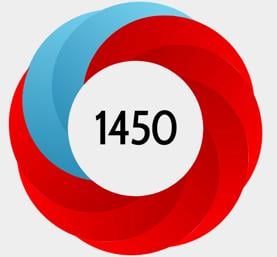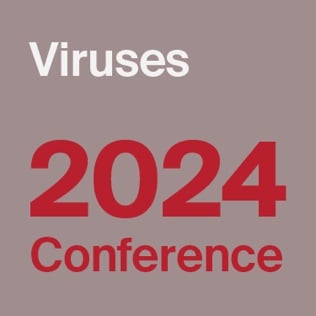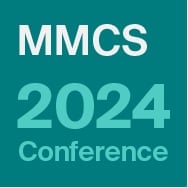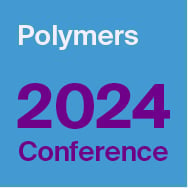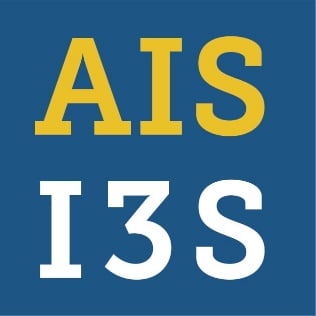
Journal Menu
► ▼ Journal Menu-
- Agronomy Home
- Aims & Scope
- Editorial Board
- Reviewer Board
- Topical Advisory Panel
- Instructions for Authors
- Special Issues
- Topics
- Sections & Collections
- Article Processing Charge
- Indexing & Archiving
- Editor’s Choice Articles
- Most Cited & Viewed
- Journal Statistics
- Journal History
- Journal Awards
- Society Collaborations
- Conferences
- Editorial Office
Journal Browser
► ▼ Journal BrowserNeed Help?
Announcements
19 April 2024
Agronomy 2024 Travel Award—Winners Announced

We are pleased to announce the winners of the Agronomy 2024 Travel Award. The award has been granted to Dr. Davide Raffaelli, a Ph.D. student at the Università Politecnica delle Marche, Italy, and Dr. Maria K. Sakka, a postdoctoral fellow at the University of Thessaly, Greece.
As the awardees, they will each receive an honorarium of CHF 500 and an electronic certificate.
With so many high-quality applicants, the evaluation process and final decision were challenging. We would like to thank all the applicants for submitting their diverse and fascinating range of research topics. On behalf of the assessment committee, we congratulate the winners on their accomplishments.
19 April 2024
Agronomy 2022 Best Paper Award—Winners Announced
We are pleased to announce the winners of the Agronomy 2022 Best Paper Award. All papers published from 1 January 2022 to 31 December 2022 in Agronomy (ISSN: 2073-4395) were considered for the award. After a thorough evaluation of the originality and significance of the papers, citations, and downloads, four winners were selected.
Each winner will receive CHF 500 and a chance to publish a paper in Agronomy in 2024 after peer review.
Review:
“Milk Thistle (Silybum Marianum L.) as a Novel Multipurpose Crop for Agriculture in Marginal Environments: A Review”
by Roberto Marceddu, Lucia Dinolfo, Alessandra Carrubba, Mauro Sarno and Giuseppe Di Miceli
Agronomy 2022, 12(3), 729; https://doi.org/10.3390/agronomy12030729
Articles:
“Benchmark of Deep Learning and a Proposed HSV Colour Space Models for the Detection and Classification of Greenhouse Tomato”
by Germano Moreira, Sandro Augusto Magalhães, Tatiana Pinho, Filipe Neves dos Santos and Mário Cunha
Agronomy 2022, 12(2), 356; https://doi.org/10.3390/agronomy12020356
“Lignin–Chitosan Nanocarriers for the Delivery of Bioactive Natural Products against Wood-Decay Phytopathogens”
by Eva Sánchez-Hernández, Natalia Langa-Lomba, Vicente González-García, José Casanova-Gascón, Jesús Martín-Gil, Alberto Santiago-Aliste, Sergio Torres-Sánchez and Pablo Martín-Ramos
Agronomy 2022, 12(2), 461; https://doi.org/10.3390/agronomy12020461
“Arbuscular Mycorrhizal Fungi Improve Growth, Photosynthetic Activity, and Chlorophyll Fluorescence of Vitis vinifera L. cv. Ecolly under Drought Stress”
by Qiuhong Ye, Hua Wang and Hua Li
Agronomy 2022, 12(2), 1563; https://doi.org/10.3390/agronomy12071563
Please join us in congratulating the winners of the Agronomy 2022 Best Paper Award. We would also like to take this opportunity to thank all of our authors for your continued support of Agronomy.
Agronomy Editorial Office
16 April 2024
Agronomy 2023 Outstanding Reviewer Award—Winners Announced
We are pleased to announce the winners of the Agronomy 2023 Reviewer Award. The Agronomy Editorial Board and editorial team would like to acknowledge the time and energy dedicated by reviewers in checking the manuscripts submitted to Agronomy (ISSN: 2073-4395). It is due to their efforts that the high quality of the journal and quick turnaround times are maintained.
Name: Dr. Dariusz Gozdowski
Affiliation: Department of Biometry, Warsaw University of Life Sciences, Warsaw, Poland
Research interests: applied statistics; agronomy; environmental sciences; statistics; biostatistics; remote sensing; geostatistics; precision agriculture
Name: Dr. Ke Liu
Affiliation: Tasmanian Institute of Agriculture, University of Tasmania, Launceston, Australia
Research interests: agriculture; crop modeling; climate change and agriculture; climate change adaptation; genotype–environment interaction; farming systems; soil carbon; GHG emissions; yield gap
Name: Prof. Dr. Józef Sowiński
Affiliation: Institute of Agroecology and Plant Production, Wroclaw University of Environmental and Life Sciences, Wrocław, Poland
Research interests: climate change; soil and plant analysis; crop adaptation to changing weather conditions; bio-economy; circular economy
Name: Dr. Christopher Guppy
Affiliation: School of Environmental and Rural Science, University of New England, Armidale, Australia
Research interests: phosphorus chemistry and cycling; root acquisition of nutrients; soil constraints on root function and nutrient access
The prize for each winner:
- CHF 500;
- The opportunity to publish a paper free of charge in Agronomy in 2024 following peer review;
- A certificate.
Agronomy Editorial Office
2 April 2024
MDPI Insights: The CEO's Letter #10 - South Korea, IWD, U2A, Japan

Welcome to the MDPI Insights: The CEO's Letter.
In these monthly letters, I will showcase two key aspects of our work at MDPI: our commitment to empowering researchers and our determination to facilitating open scientific exchange.
Opening Thoughts
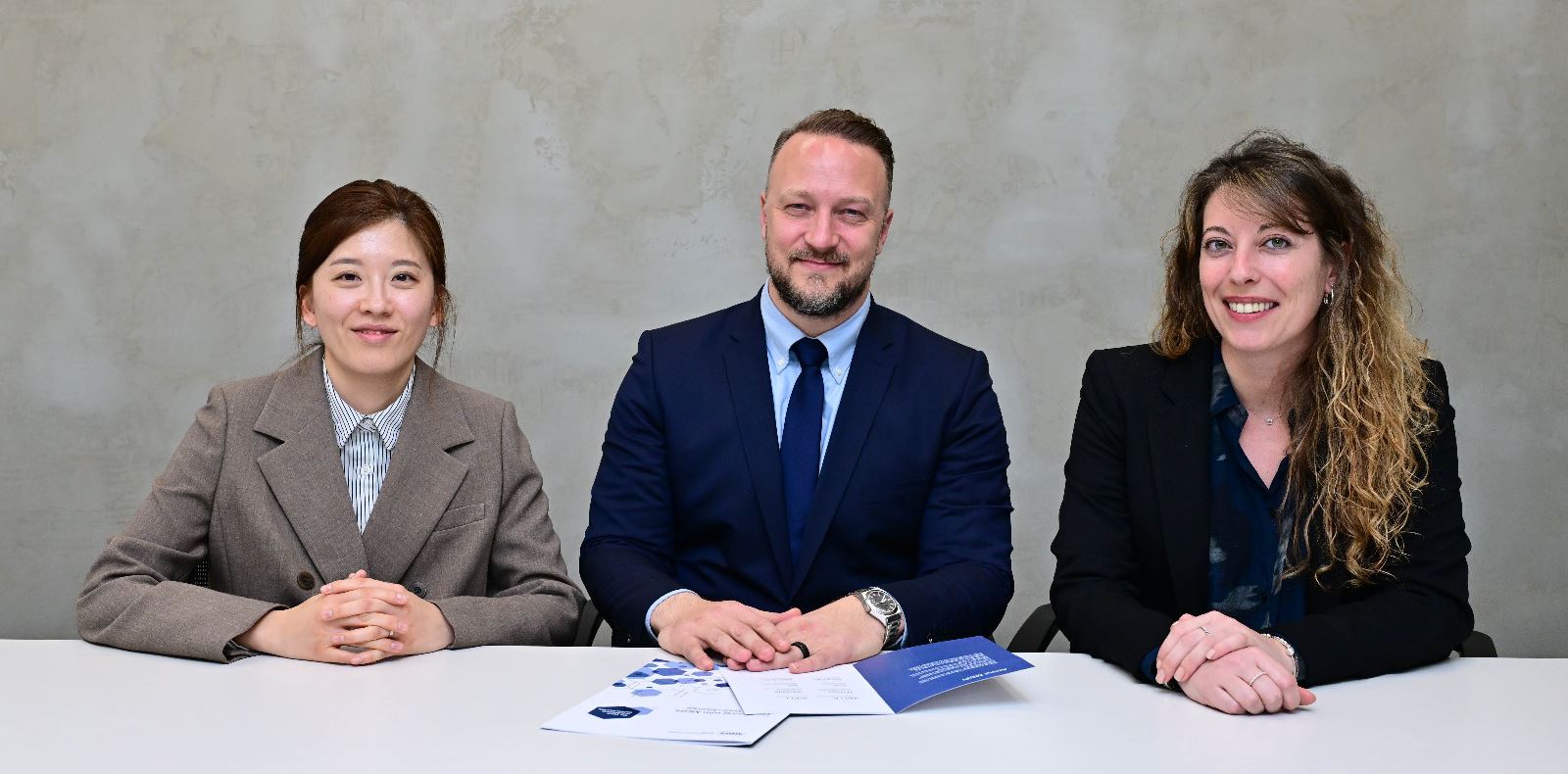
Left to right: Dr. Jisuk Kang (Scientific Officer, MDPI), Stefan Tochev (CEO, MDPI), and Dr. Giulia Stefenelli (Chair of Scientific Office Board, MDPI), during media meetings at Prain Agency office in Seoul, South Korea.
Visit to Seoul, South Korea
During my recent visit to South Korea, I had the privilege of meeting various stakeholders, including representatives of government, research institutions, and academia, to understand their needs and communicate MDPI’s commitment to accessible science. Accompanied by my colleagues Dr. Giulia Stefenelli and Dr. Jisuk Kang, I engaged with the Korean scientific community, which is increasingly embracing open access (OA).
As the leading OA publisher in South Korea, MDPI is trusted by local authors and in 2023 enjoyed an approximately 30% share of the OA market. South Korea ranks sixth globally for MDPI in terms of research papers submitted and published.
MDPI and South Korea by Numbers
As at 30 March, over 76,000 MDPI articles have been authored by individuals affiliated with Korean institutions. We have over 1,800 active editorial board members (EBMs) from South Korea, with more than 880 EBMs having an H-index between 26 and 50, including 10 serving as Chief Editors.
“South Korea is the sixth-largest contributor to our total publications”
Over the past five years (2019–2023), nearly 120,000 authors affiliated with South Korean institutes have published with MDPI. Specifically in 2023, we received approximately 25,000 submissions from South Korean authors, publishing close to 13,000 articles, resulting in a rejection rate of 47.4%, which is not far below MDPI’s overall rejection rate of 56.4% in 2023.
Institutional Partnerships with South Korea
I am pleased to share that MDPI has more than 825 institutional partnerships worldwide, with 12 in South Korea, including Kyunghee University, Chung-Ang University, and Inha University, among others.
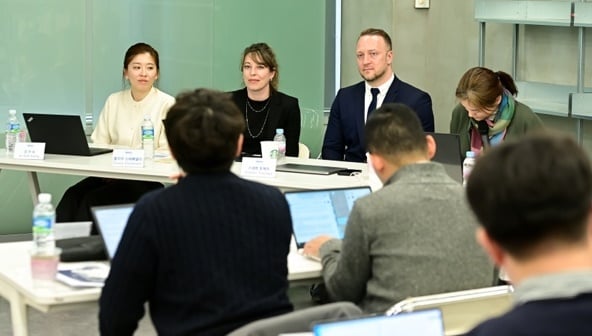
Left to right: Dr. Jisuk Kang (Scientific Officer, MDPI), Dr. Giulia Stefenelli (Chair of Scientific Office Board, MDPI), and Stefan Tochev (CEO, MDPI) fielding media questions at Prain PR Agency office in Seoul, South Korea.
Over the past three years (2021–2023), we have had some of the most prestigious academic universities ranked among the top 10 Korean institutions publishing with MDPI. Seoul National University had the highest number of publications with MDPI during those three years, publishing nearly 6,000 papers. Universities such as Korea University and Yonsei University also rank among the top 10 Korean institutions publishing with MDPI.
MDPI Hosts Seminar for Academia and Media
As the world’s leading OA publisher, MDPI is actively democratizing science. This is reflected in the seminars we hosted on 21 March to address questions about our editorial processes and ethical standards. The visit garnered media coverage, reflecting our mission to providing high-quality services and fostering open dialogue in the community.
“MDPI is actively democratizing science”
MDPI in the News

Stefan Tochev (CEO, MDPI) leading a seminar on OA and MDPI at Prain PR Agency office in Seoul, South Korea.
Media coverage generated by our visit to Seoul included the following stories:
“Open access is an unstoppable trend…it will lead the development of the knowledge ecosystem.”
I greatly appreciate the contributions of everyone who took the time to meet with us, share their stories, and hold us accountable for continuing to provide high-quality publishing services while identifying areas for improvement. I am also excited to announce that we have opened an MDPI office in Seoul and will release a press release on MDPI.com, with details, by the end April 2024. The purpose of the office is to establish a local presence to connect with and support the South Korean academic community through institutional partnerships, conferences, author workshops, stakeholder communications, and more.
Impactful Research

Featured Articles on Women’s Leadership and Healthcare
In celebration of International Women’s Day (8 March 2024), MDPI curated a collection of research articles on various topics, including women’s leadership, reproductive health, preventive healthcare, and a selection of articles from our journal Women.
Women’s Leadership
- Women Entrepreneurship and Sustainable Development: Bibliometric Analysis and Emerging Research Trends
Sustainability 2022, 14, 9160. https://doi.org/10.3390/su14159160 - Refugee Women Business Mentors: New Evidence for Women’s Empowerment
Sustainability 2022, 14, 9154. https://doi.org/10.3390/su14159154 - Women and Leadership in Higher Education: A Systematic Review
Soc. Sci. 2023, 12, 555. https://doi.org/10.3390/socsci12100555 - Understanding Needs and Potentials for Gender-Balanced Empowerment and Leadership in Climate Change Adaptation and Mitigation in Africa
Sustainability 2022, 14, 9410. https://doi.org/10.3390/su14159410 - Challenges Women Experience in Leadership Careers: An Integrative Review
Merits 2023, 3, 366-389. https://doi.org/10.3390/merits3020021
Women’s Reproductive Health
- Recreational Female Athletes’ Understanding of and Perceived Impact of the Menstrual Cycle on Physical Performance, Mood, and Sleeping Behaviour
Women 2023, 3, 445-456. https://doi.org/10.3390/women3030034 - Difficulties in Adaptation of the Mother and Newborn via Cesarean Section versus Natural Birth—A Narrative Review
Life 2023, 13, 300. https://doi.org/10.3390/life13020300 - The Main Theories on the Pathogenesis of Endometriosis
Int. J. Mol. Sci. 2023, 24, 4254. https://doi.org/10.3390/ijms24054254
Women’s Preventive Healthcare
- Insulin Metabolism in Polycystic Ovary Syndrome: Secretion, Signaling, and Clearance
Int. J. Mol. Sci. 2023, 24, 3140. https://doi.org/10.3390/ijms24043140 - Assessing Barriers Encountered by Women in Cervical Cancer Screening and Follow-Up Care in Urban Bolivia, Cochabamba
Healthcare 2022, 10, 1604. https://doi.org/10.3390/healthcare10091604 - Updates on HPV Vaccination
Diagnostics 2023, 13, 243. https://doi.org/10.3390/diagnostics13020243
Featured Articles in MDPI Journal Women
Below are a few articles from Women, our journal focused on women’s health, the social determinants of health, and the healthcare system that serves women. The aim of Women is to encourage academics to publish their experimental and theoretical results in detail, to aid reproducibility, and in an engaging style, to aid comprehensibility.
- Premenstrual Syndrome and Exercise: A Narrative Review
Women 2023, 3, 348-364. https://doi.org/10.3390/women3020026 - Increasing Awareness of the Human Papillomavirus (HPV) Vaccine for Women 18–45 Years of Age
Women 2023, 3, 365-373. https://doi.org/10.3390/women3030027 - Addressing Women’s Needs with Human Immunodeficiency Virus (HIV) and Enhancing the Visibility of Pharmacists in the Public Health Arena
Women 2022, 2, 346-352. https://doi.org/10.3390/women2040032
Inside MDPI

Championing Women’s Healthcare and Access to Healthcare Information
MDPI colleagues from our offices joined in celebrating #IWD2024. In doing so, we emphasized key missions that encompass:
- Empowering women to assume leadership and decision-making roles in both business and science.
- Helping women and girls make informed decisions about their health.
- Recruiting and developing female talent and fostering inclusive workplace environments.
“We are thrilled to recognize the accomplishments of women scientists”
I am proud to see our colleagues enthusiastically supporting the International Women’s Day call to ‘Inspire Inclusion!’ The heart-hands in the collage below symbolize our appreciation of the achievements of women researchers and the recognition of the trailblazers who have courageously made a mark on societies past and present.
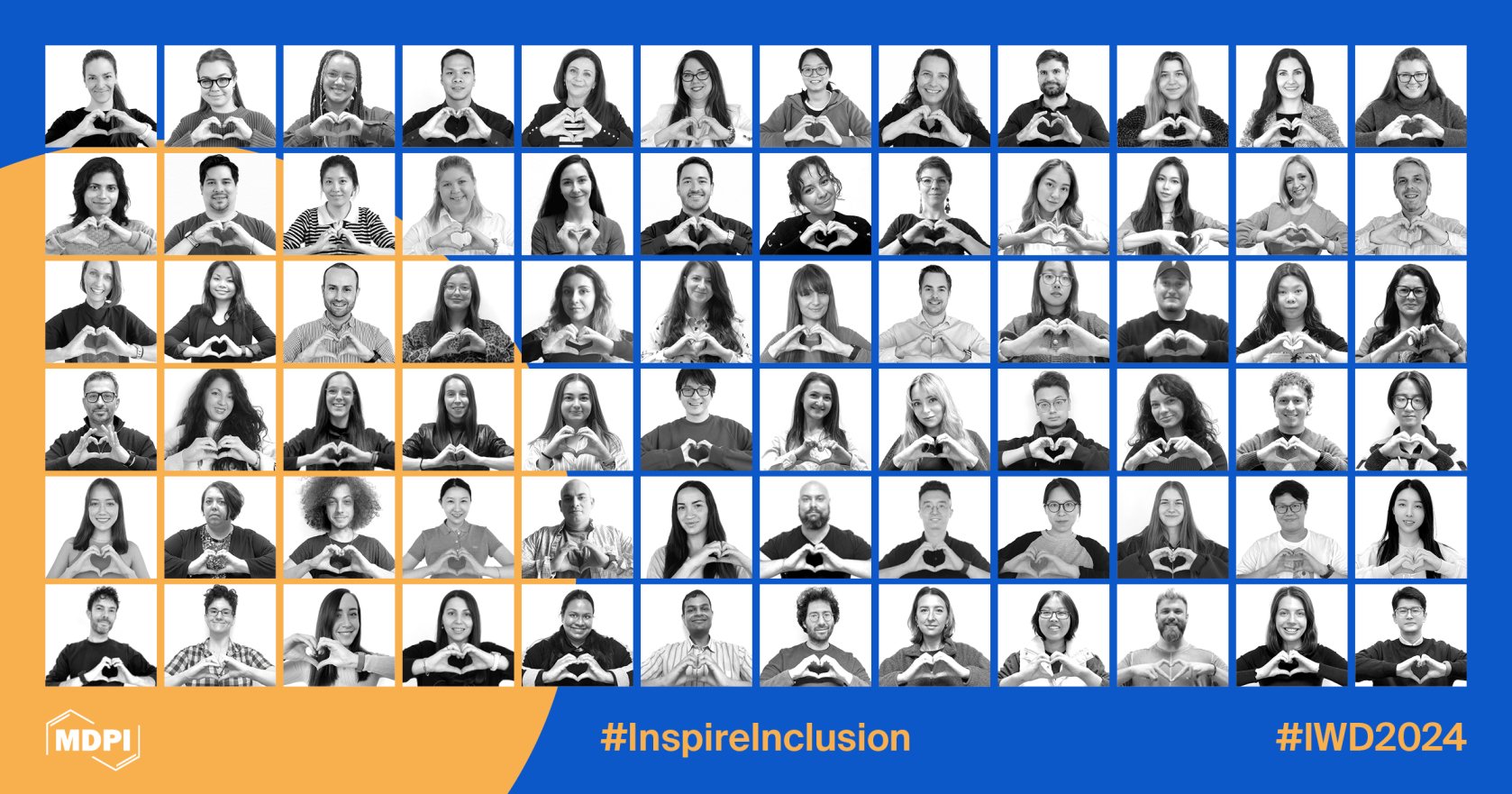
We are thrilled to recognize the accomplishments of women scientists through our many MDPI awards and by highlighting success stories. As inspirational figures, female scientists are paving the way for the next generation of women aspiring to pursue careers in engineering, life sciences, computing, and various other STEM fields.
“I consider myself lucky because I work with incredibly talented women who inspire me every day.”
– Dr. Alessandra Pasut, Winner of MDPI's ‘Biology 2023 Young Investigator Award’
“It’s really important to find a supportive and enabling environment in which to do your science; it would have a big impact on you as a person and on your scientific outputs.”
– Dr. Rhea Longley, Winner of the ‘Pathogens 2023 Young Investigator Award’
Open-access publishing, in particular, allows early-career women researchers to share their work more widely, potentially attracting mentorship opportunities and collaborations. This support is crucial for career development and advancement.
Coming Together for Science

MDPI Joins United2Act in Collective Fight to Stop Paper Mills
In my February 2024 CEO Letter, I highlighted some of our recent initiatives aimed at bolstering our commitment to research integrity, including joining the STM Integrity Hub and expanding our Research Integrity and Publication Ethics team (RIPE). Continuing our efforts in coming together for science, I am pleased to share our participation in the United2Act initiative.
The text below is taken from our official announcement:
United2Act represents an international group of stakeholders in the publishing industry committed to addressing the collective challenge posed to research integrity by paper mills.
Scientists and academic publishers have increasingly noted the alarming proliferation of paper mills, recognized as fraudulent entities seeking to manipulate the publication process for financial profit. These entities engage in fraudulent practices such as falsifying or fabricating data, selling co-authorship of fake papers, manipulating peer review, and including inappropriate citations. These actions pose a significant threat to the integrity of the scholarly record, prompting widespread concern among those involved in the academic community.
MDPI has been actively contributing to combat the undermining of the scientific record. Our editors employ a set of tools to detect potential ethical breaches within a manuscript and to tackle the issue of fake papers.
United2Act’s consensus statement is the outcome of a virtual summit held in May 2023. It involved the participation of research bodies, publishers, researchers/sleuths, universities, and publishing infrastructure from 15 countries and resulted in a Consensus Statement outlining five key areas of action for all stakeholders:
- Education and awareness
- Improve post-publication corrections
- Facilitate and organise research on paper mills
- Enable the development of trust markers
- Facilitate dialogue between stakeholders
MDPI is committed to promoting transparency and integrity in scholarly publishing and is continuing to work closely with the scientific community toward this goal.
Closing Thoughts
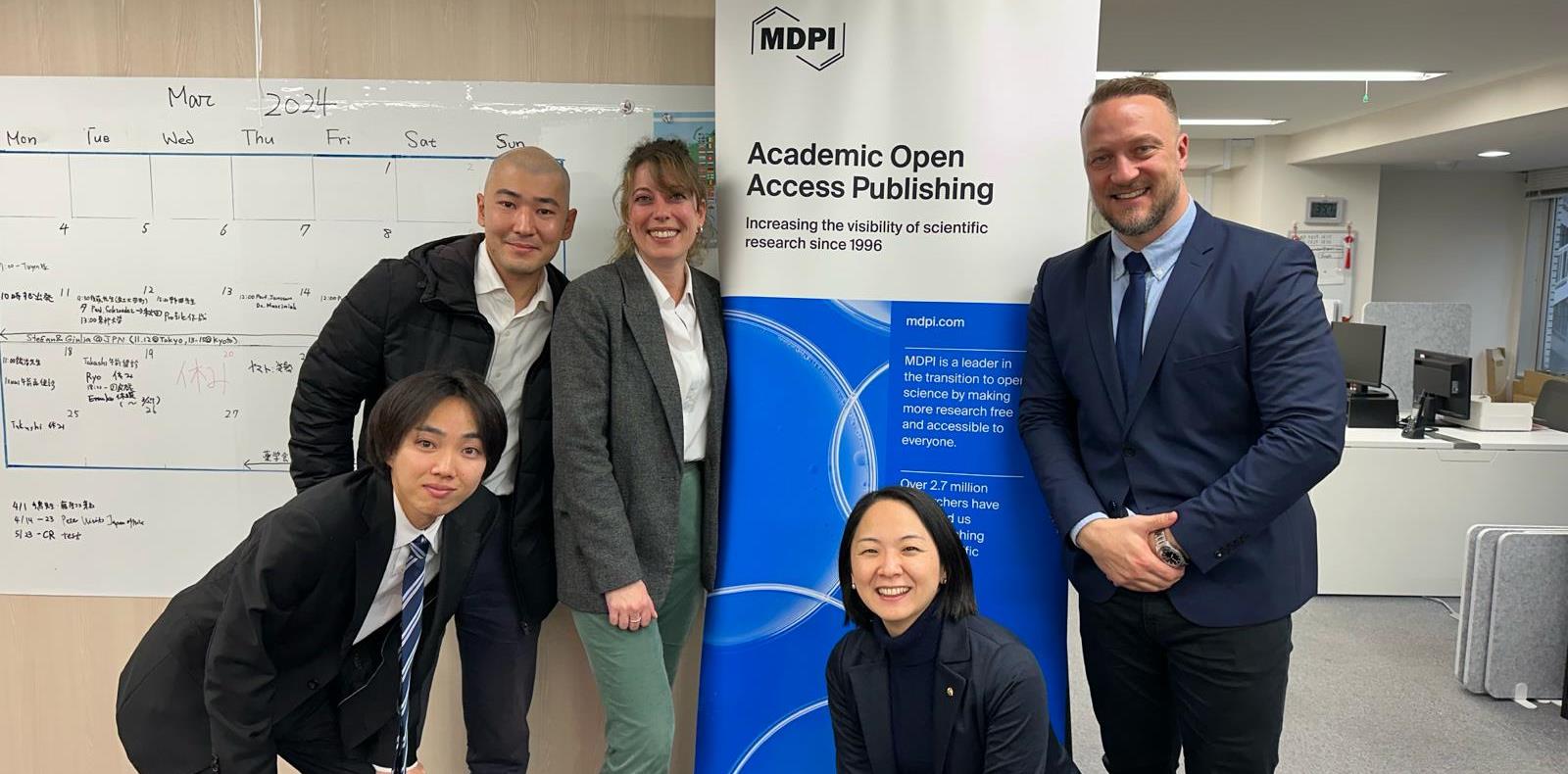
Left to right: Ryo Hirayama (Marketing Specialist, MDPI), Takashi Sasabe (Marketing Specialist, MDPI), Dr. Giulia Stefenelli (Chair of Scientific Office Board, MDPI), Dr. Izumi Yamamoto (Marketing Manager, MDPI), and Stefan Tochev (CEO, MDPI), at MDPI’s office in Tokyo, Japan.
Visit to Tokyo and Kyoto, Japan
In March, I had the opportunity to visit our Tokyo office and engage with stakeholders in Tokyo and Kyoto. During the visit, I also recorded a video message to welcome Japanese scholars working with MDPI and to highlight our operations in Japan.
We held meetings with Editors-in-Chief, librarians, scholars, and external consultants to gather feedback on our efforts to enhance our reputation and explore additional steps we can take in that direction. Japan's rich cultural heritage, characterized by tradition, respect, and formality, provided valuable insights into meeting the publishing needs specific to Japan.
Japan’s Open Access statistics
Over the years, we have seen a shift from subscription-only to gold OA publishing in Japan, despite the lack of an official mandate. Here are some statistics:
- 2012: 68% of articles were subscription-only, 6% were green Open Access, and 8% were gold Open Access.
- 2016: 55% of articles were subscription-only, 6% were green Open Access, and 20% were gold Open Access.
- 2022: 43% of articles were subscription-only, 7% were green Open Access, and 39% were gold Open Access.
To learn more about the history of OA in Japan as well as about future trends, please read this blog post.
“Japan is the ninth-largest contributor to our total publications”
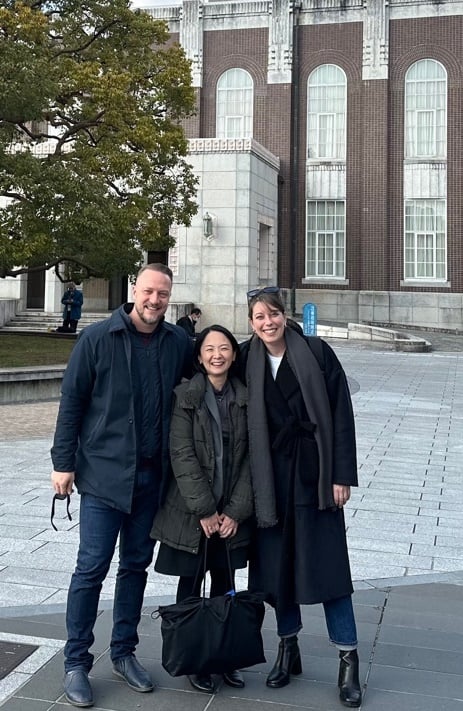
Left to right: Stefan Tochev (CEO, MDPI), Dr. Izumi Yamamoto (Marketing Manager, MDPI), and Dr. Giulia Stefenelli (Chair of Scientific Office Board, MDPI) visiting Kyoto University in Kyoto, Japan.
MDPI and Japan by Numbers
As at 1 April, over 50,000 MDPI articles have been authored by scholars affiliated with Japanese institutions, making the country the ninth-largest contributor to our total publications. Over the past three years (2020–2023), nearly 90,000 authors affiliated with Japanese institutes have published with MDPI, and we have collaborated with over 4,600 Guest Editors from Japan.
In 2023, we published over 8,200 papers from authors associated with Japanese institutions. MDPI collaborates with 41 institutional partnerships in Japan, including the University of Tokyo, Hokkaido University, and Nagoya University. We have over 2,100 active EBMs from Japan, more than 1,050 EBMs having an H-index between 26 and 50, including 13 serving as Editors-in-Chief.
General Feedback – a side note
A general takeaway from our discussions with stakeholders from around the world is that negative perceptions of MDPI often stem from misinformation, misconceptions, or misunderstandings about MDPI and our practices. While we acknowledge our mistakes and work diligently to address them, maintaining a strong editorial procedure and robust peer-review process, I find that educating stakeholders about our how we do what we do and our ongoing improvements tends to help shift opinions.
That said, we recognize the importance of addressing individual concerns. We take feedback seriously and are continuously working to get better while not compromising the core principles that millions of authors appreciate about MDPI.
Chief Executive Officer
MDPI AG
29 March 2024
Meet Us at the 20th Annual International Conference of the Metabolomics Society (Metabolomics 2024), 16–20 June 2024, Osaka, Japan

MDPI will be attending the 20th Annual International Conference of the Metabolomics Society (Metabolomics 2024) held in Osaka, Japan, from 16 to 20 June 2024. The conference is the official annual meeting of the Metabolomics Society, and the largest metabolomics meeting worldwide. This is the third time that the conference will be held in Japan, following the 2005 and 2014 conferences held in Tsuruoka. We look forward to welcoming the metabolomics community, building strong connections, and discussing world-class research in a relaxed collegial environment. Let us build on the momentum of the incredible Niagara Falls and Valencia conferences that brought us back together in person, and make it the best meeting of 2024 together!
During this conference, MDPI will welcome researchers from different backgrounds to visit and share their latest views and research with us.
The following MDPI journals will be represented:
- Metabolites;
- Biomolecules;
- Plants;
- IJMS;
- Life;
- Cells;
- Agronomy;
- Nutrients;
- Cancers;
- CIMB;
- Genes;
- Antioxidants.
If you plan on attending this conference, feel free to stop by our booth. Our delegates look forward to meeting you in person to answer any questions you may have. For more information about the conference, please visit the following link: https://www.metabolomics2024.org/.
13 March 2024
Prof. Dr. Zhengqin Xiong Appointed Section Editor-in-Chief of Section “Soil and Plant Nutrition Section” in Agronomy
We are pleased to announce that Prof. Dr. Zhengqin Xiong has been appointed Section Editor-in-Chief of the Section “Soil and Plant Nutrition Section” in Agronomy (ISSN: 2073-4395).
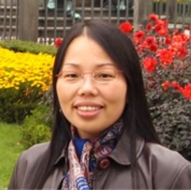
Name: Prof. Dr. Zhengqin Xiong
Affiliation: College of Resources and Environmental Sciences, Nanjing Agricultural University, Nanjing 210095, China
Research Interests: carbon footprint; nitrogen footprint; reactive
nitrogen; greenhouse gases; nitrous oxide; greenhouse gas intensity;
carbon budget; biochar; nitrogen use efficiency
We warmly welcome Prof. Dr. Zhengqin Xiong as the Section Editor-in-Chief of the “Soil and Plant Nutrition Section” Section, and we look forward to her leading Agronomy to achieve many more milestones.
Agronomy Editorial Office
4 March 2024
MDPI Insights: The CEO's Letter #9 - Romania, Research Integrity, Viruses

Welcome to the MDPI Insights: The CEO's Letter.
In these monthly letters, I will showcase two key aspects of our work at MDPI: our commitment to empowering researchers and our determination to facilitating open scientific exchange.
Opening Thoughts

Reka Kovacs (Deputy Office Manager, MDPI), Stefan Tochev (CEO, MDPI), and Sandra Ana Spatariu (Office Manager, MDPI) at the MDPI office in Cluj, Romania.
MDPI’s Impact on Romania
In February, I visited our office in Cluj, Romania. I worked closely with our senior office managers and various teams, including the departments of training, marketing and conferences, as well as our journal relationship specialists, reviewing our service to the local scholarly community. During the visit, I also met with representatives from Babes-Bolyai University and the Technical University of Cluj-Napoca. Our multifunctional Romanian office plays an important role in supporting our collaborations with the local market as well as helping to meet MDPI’s overall business needs.
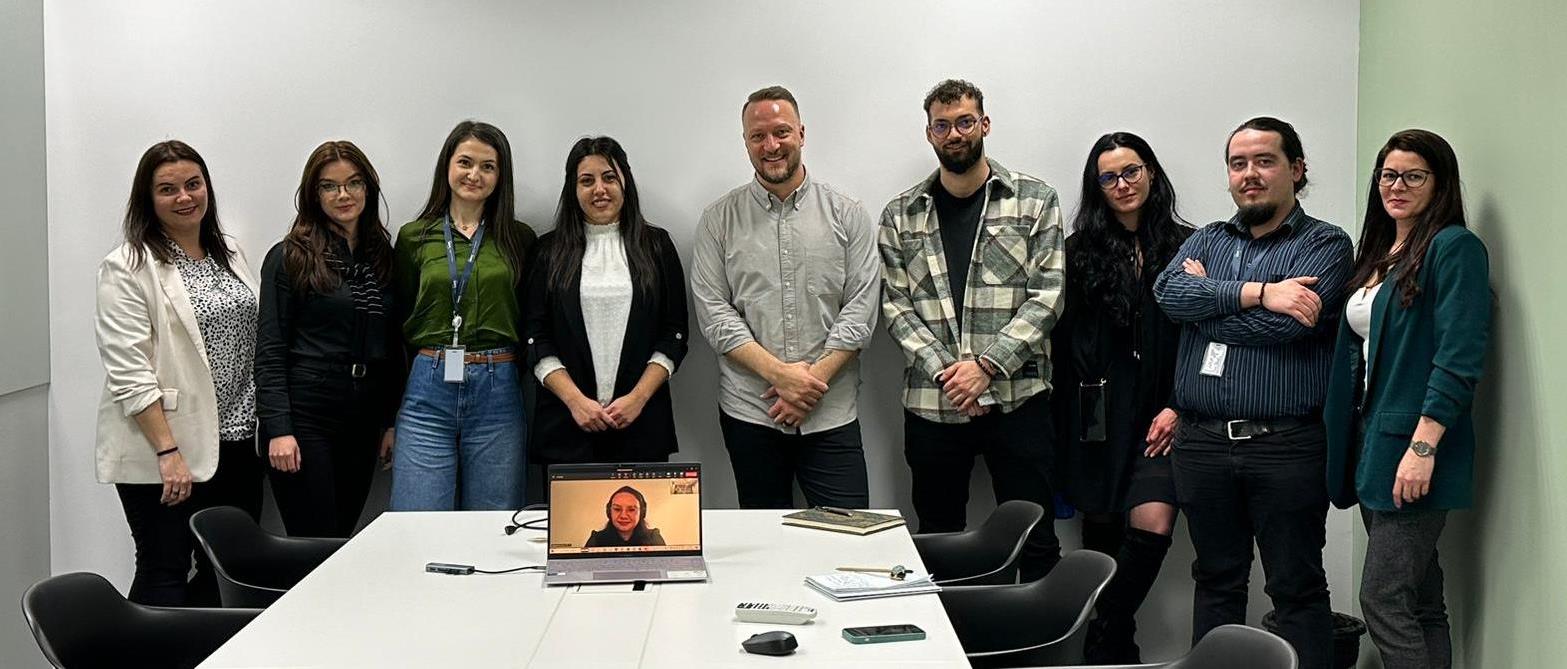
Feedback and strategy meeting with a group of MDPI’s Journal Relationship Specialists at the MDPI office in Cluj, Romania.
With 22,436 articles, Romania ranks as a top 20 contributing country to MDPI’s total number of papers published as at 28 February 2024. This highlights the importance of our collaboration with Romanian-affiliated authors and the growing opportunity to support their publishing needs. MDPI is one of the few academic publishers with a significant presence in Romania, boasting over 360 colleagues across our offices in Bucharest and Cluj. We are also proud to hire colleagues from local institutions to launch their careers within publishing.
Romania ranks as a top 20 contributing country.
The Numbers: 2019–2023
MDPI has seen a healthy increase in submissions from Romanian authors over the past three years, from 8,439 in 2021 to 11,866 by end of 2023, with most submissions going to journals such as Sustainability, Medicina, Diagnostics, IJMS, Applied Sciences, and JCM. From 2019 to 2023, MDPI published articles from 32,145 authors affiliated with Romanian institutions. Over those years, we have worked with Romanian Guest Editors on nearly 3,000 occasions to support their Special Issue and Topical collections.
With more than 300 Editorial Board Members from Romania, 34 appear on the board of Mathematics, 27 on Materials, 19 on Polymers, 18 on Coatings, and 16 on Molecules, while three serve as Section Editors-in-Chief (SEiC) on our journals Coatings (3.4 IF, 4.6 Citescore), Magnetochemistry (2.7 IF, 3.5 Citescore), and Chemosensors (4.2 IF, 3.9 Citescore).
Institutional Open Access Programs
Our commitment to working with institutions is evident in Romania, where we have established eight Institutional Open Access Programs (IOAP) with esteemed institutions such as the University of Bucharest, the University of Medicine and Pharmacy Cluj-Napoca, and most recently the National Institute for Laser, Plasma and Radiation Physics.
Our growth and presence in Romania are a true testament.
We also have IOAP agreements with Babes-Bolyai University and the Technical University of Cluj-Napoca, where I had the opportunity to meet senior stakeholders during my visit. Below are a few photos capturing our meeting with Prof. Radu Silaghi-Dumitrescu (Head of Faculty of Chemistry, Babes-Bolyai University) at the MDPI office in Cluj, Romania, along with a photo from our meeting with Vice Deans Nicoleta Cobarzan, Nicoleta Ilies, and Hoda Gavril, from the faculty of Civil Engineering at the Technical University of Cluj, Romania.
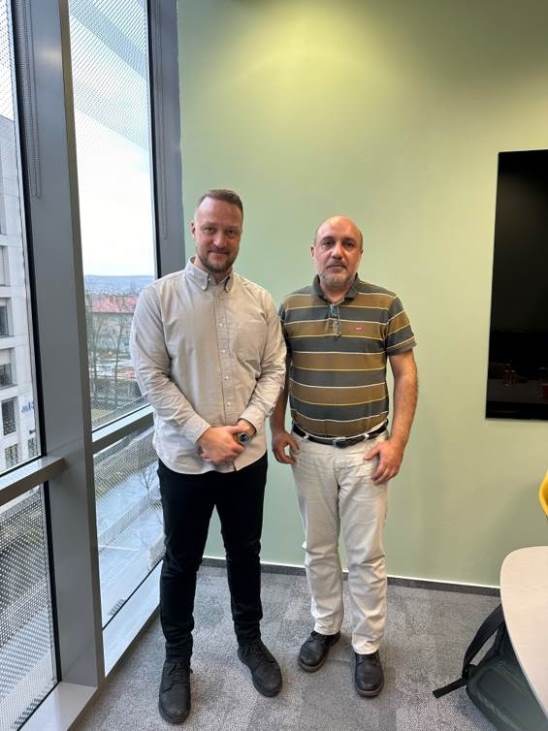

Our growth and presence in Romania are a true testament to the service we provide to the scholarly community and the relationships we foster in that region. We look forward to continuing to support Romanian scholars and institutions by providing a valuable and trusted experience with MDPI, the leader in open access publishing.
Impactful Research

MDPI Joins the STM Integrity Hub
MDPI has long been a supporter and partner of STM, with our involvement ranging from sponsoring and attending events to helping organize event programs. By joining the STM Integrity Hub, we aim to further our commitment to STM initiatives aimed at safeguarding the integrity of science.
“We are pleased to welcome MDPI as the 35th organisation participating in the Hub. This expansion is critical, as every new member enhances our capacity to prevent fraudulent submissions from entering the academic record.”
Joris van Rossum, Director of Research Integrity, STM
MDPI operates in full alignment with STM Integrity Hub's values of shared data and experiences. We strongly believe in collaboration and open exchange for the purposes of creating a holistic approach to support research integrity at MDPI itself and across the entire academic publishing industry. The Integrity Hub is an excellent example of how publishers can come together to jointly address industry-wide challenges related to research integrity, such as manuscripts that breach research integrity standards and paper-mills.
I look forward to our Research Integrity and Publication Ethics Team (RIPE) team immersing themselves in this initiative, exchanging information, best practices, and tools for the benefit of the entire scholarly ecosystem. We believe that ethical publishing standards should be implemented across the board, and we aim to be rigorous in our approach, addressing research integrity issues and improving the impact of published research.
Inside MDPI

MDPI Expands Research Integrity and Publication Ethics Team (RIPE)
In addition to external collaborations and joint initiatives aimed at further strengthening our commitment to research integrity, we are also enhancing our internal efforts. This includes improving our processes and guidelines and expanding our teams and departments to ensure quality assurance throughout our publishing process.
We are pleased to announce the expansion of our Research Integrity and Publication Ethics Team (RIPE) at MDPI. The RIPE team has recently welcomed new colleagues, each bringing unique skills and a personal commitment to prioritize ethical considerations in all our work.
The demand for research integrity and high ethical standards in academic publishing is steadily rising across our industry. Our expanded RIPE team will work to enhance and align our practices with industry best practices, ensuring excellence in research integrity and publication ethics.
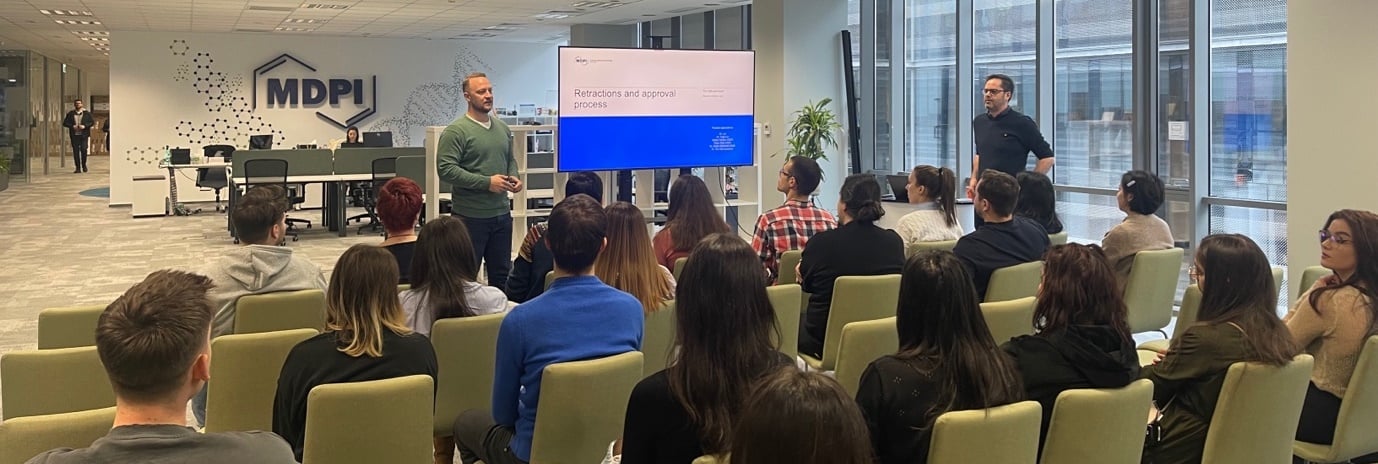
Stefan Tochev (CEO, MDPI) introduces Dr. Tim Tait-Jamieson (Research Integrity Lead, MDPI) for his presentation on MDPI’s Retraction and Approval Process to a group of Journal Relationship Specialists at the MDPI office in Cluj, Romania: “The demand for research integrity and publication ethics is steadily rising across our industry.”
Introducing our Research Integrity and Publication Ethics Team
Led by Dr. Tim Tait-Jamieson (Research Integrity Lead), the RIPE team comprises Dr. Ivana Resanovic (Research Integrity Manager), Dr. Lavinia Rogojina (Research Integrity Manager), Ms. Diana Apodaritei (Research Integrity Specialist), Dr. Zoltan Mihaly (Research Integrity Specialist), Mr. Aleksandar Đukić (Research Integrity Specialist), Ms. Ana Stankovic (Research Integrity Specialist), and Ms. Anna Pena (Publication Ethics Assistant).
Please click here to access everything that you need to know about MDPI’s Research and Publication Ethics.
With this span of complementary roles, the RIPE team collaborates directly with journal editorial teams and works closely with various departments, including our Scientific Office Board and our Journal Relationship Specialists. The team’s primary objectives are to help prevent issues regarding research integrity and publication ethics during peer review, uphold MDPI’s ethics policies, adhere to industry standards, and resolve publication ethics and research integrity issues and complaints.
Quality Updates to Special Issues Oversight
At MDPI, we are committed to reviewing policies pertaining to the quality of research. In this blog post, Shaheena Patel (Communications Associate, MDPI), outlines two recent updates to MDPI journal processes. These updates pertain to Special Issue (SI) quality guidelines, in line with criteria provided by COPE and DOAJ. Alongside the SI updates, details regarding the new minor corrections policy introduced in 2024 are provided in the blog.
The two updates we implemented include greater oversight and the verification of Guest Editor credentials. These guidelines require that Editors-in-Chief (EiCs) and Editorial Board Members (EBMs) take responsibility for overseeing SIs.
PS. Thank you, James Butcher, for featuring this up in your 67th issue of the Journalogy newsletter.
Read more:
Coming Together for Science
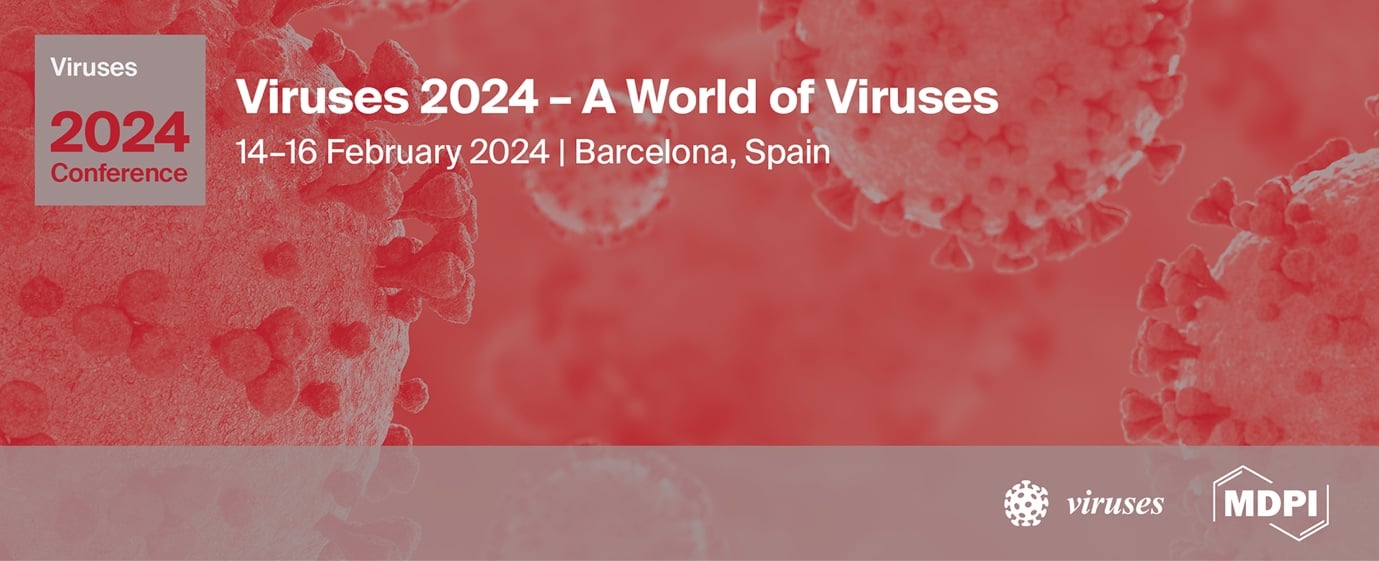
Viruses 2024 – A World of Viruses
I am pleased to share the success of our MDPI conference Viruses 2024 – A World of Viruses, held 14-16 February, in Barcelona. With 240 registrations, this event brought together top scientists, researchers, and industry experts from 40 countries to share their findings on the latest developments in viral pathogenesis and immune responses.
Attendees gathered for the 5th edition of the Viruses’ conference, where we hosted influential keynote speeches from Nobel Prize laureate Dr. Charles M. Rice and ‘Distinguished Senior Virologist’ Prof. Luis Enjuanes, along with 14 invited speakers, 47 selected speakers, and nine flash poster presenters, to discuss the most significant issues in virology today.
Recap on the #Viruses2024 Conference
Take a look at the key moments from MDPI’s Viruses event and please join us in commemorating a gathering for global knowledge and cooperation. A heartfelt thank-you to all attendees; their passion and engagement played a crucial role in making this event an engaging success!
Below are calls to action from the keynote speakers encouraging collaboration and communication:
“There’s never been a better time than now to really take the power that we have both in terms of basic research and also in biotech and pharma to develop antiviral agents.” - Dr. Charles M. Rice, The Rockefeller University, New York, USA
“The collaboration between labs is absolutely essential. Improving initial detection and improving communication is a must for all of us working in science.” - Prof. Dr. Luis Enjuanes, National Center of Biotechnology (CNB-CSIC), Madrid, Spain
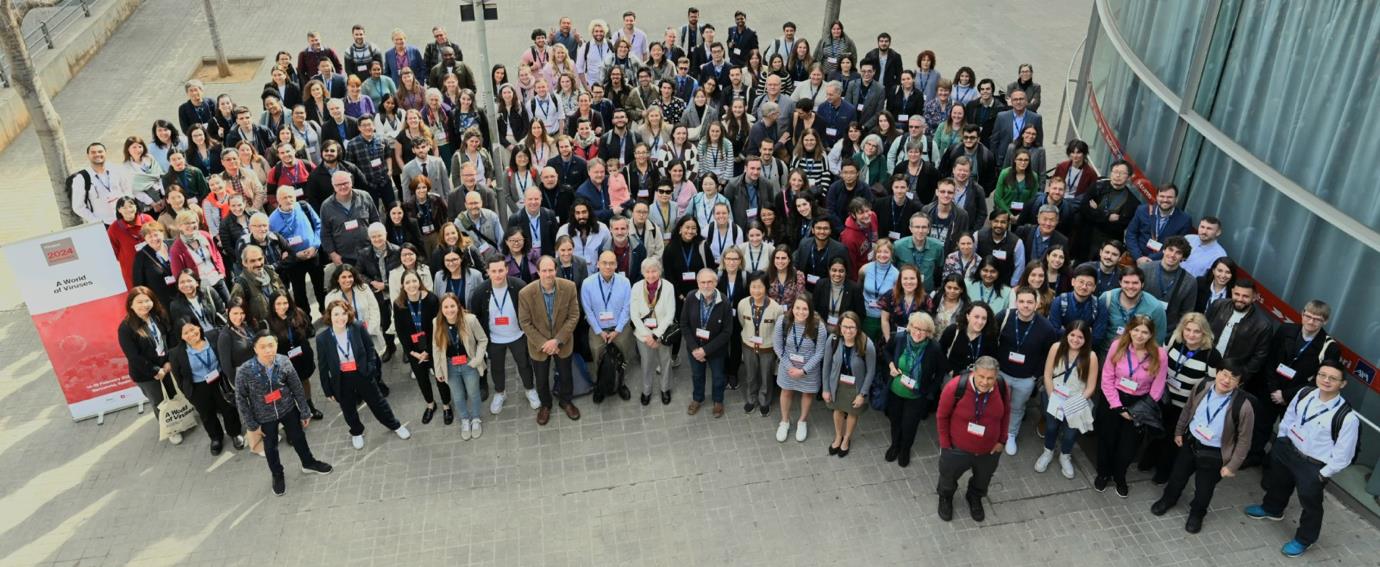
Our thanks go to our sponsors and partnering societies, our Viruses journal and editorial team, our Barcelona colleagues, and the social media, conference and other MDPI teams for making this event a memorable occasion. View the event gallery here.
Upcoming In-Person Event
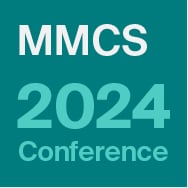
24–26 April, 2024
4th MMCS – Harnessing the Power of New Drug Modalities
Location: Barcelona, Spain
Esteemed speakers at MMCS 2024 include Prof. Arun K. Ghosh, the mind behind the Darunavir molecule, and Prof. Paul Brennan, CSO of Alzheimer's Research UK Oxford Drug Discovery Institute.
Find more upcoming MDPI events here.
Organize Your Event with MDPI’s Sciforum
Sciforum is MDPI’s platform dedicated to the organization of scientific events. In line with our mission to promote science, Sciforum supports scholars, societies, research networks, and universities at all stages of organizing in-person events, virtual events and webinars. Our platforms are efficient, user-friendly, and cost-effective. We handle all steps related to event management. Contact us for details.
Closing Thoughts

Researcher to Reader (R2R) Conference
From 20–21 February 2024, I had the pleasure of attending the Researcher to Reader (R2R) conference in London, which MDPI has proudly sponsored over the years. The conference programme offered a variety of session formats, including workshops, panel discussions, debates, interviews, presentations, and lightning talks, with opportunities to discuss relevant topics.
We take pride in supporting the scientific community, bringing researchers across the world together to network, exchange ideas and share the latest in science and publishing. In 2023, MDPI invested close to 2 million CHF in sponsoring over 2,000 scientific and publishing-related conferences worldwide.
R2R Peer Review Innovations Workshop
I found the R2R conference to be engaging, with the workshops being particularly enjoyable. My colleague Giulia Stefenelli (Chair of Scientific Office Board) and I participated in the “Peer Review Innovations” workshop, which spanned four sessions over the two days. These sessions explored the future of peer review and how we can improve the peer review process for everyone involved. Notably, the large majority of attendees expressed their opinion that peer review, as currently practiced, requires significant improvement. Together, we collaborated on potential immediate and long-term improvements and innovative processes, aiming to create an ecosystem beneficial to all stakeholders by strengthening submission systems with the aim of reducing threats and making authors more responsible for their work. We also discussed the opportunity for academic institutions to better scrutinize the quality of the work produced and submitted to journals.
Our group comprised publishers, software providers, librarians, and more, bringing diverse perspectives to the discussions. These interactions were relevant to MDPI’s ongoing conversations, providing insights to our efforts. The session also made me appreciate that MDPI is doing well, as the group discussions included the subject of various quality checks that we have already embedded in our processes, ensuring that we keep abreast of industry standards.
The need for an optimized system to incentivize the activities of editors and reviewers was also a focus of discussion, as well as the support that reviewers need from publishers via the provision of strong reports through fixed forms, questionnaires and training.
At MDPI, we are currently auditing our reviewer program to improve reviewer recognition, guidelines, and methods for identifying suitable reviewers, while maintaining our commitment to quality and timeliness.
Congratulations to Mark Carden, Conference Director, and the R2R team for organizing a productive and successful event. PS: The break times were greatly appreciated as well!
Chief Executive Officer
MDPI AG
31 January 2024
MDPI Insights: The CEO's Letter #8 - Altmetric and Flat Fee Agreement

Welcome to the MDPI Insights: The CEO's Letter.
In these monthly letters, I will showcase two key aspects of our work at MDPI: our commitment to empowering researchers and our determination to facilitating open scientific exchange.
Opening Thoughts

MDPI and Digital Science Meeting
At MDPI, we are committed to providing our authors with the essential tools to publish, promote, and track their research. In line with this commitment, we have established a longstanding collaboration with Digital Science, a company specializing in research data and analytical insights for the research community. Our collaboration integrates their Altmetric tool, offering us and our authors the ability to track a variety of sources that monitor and report attention surrounding publications.
As part of our collaboration, we recently hosted Cathy Holland, Director of Global Publisher Business Development, and Helen Cooke, Managing Director of Publisher Sales, from Digital Science, at our MDPI headquarters in Basel, Switzerland.
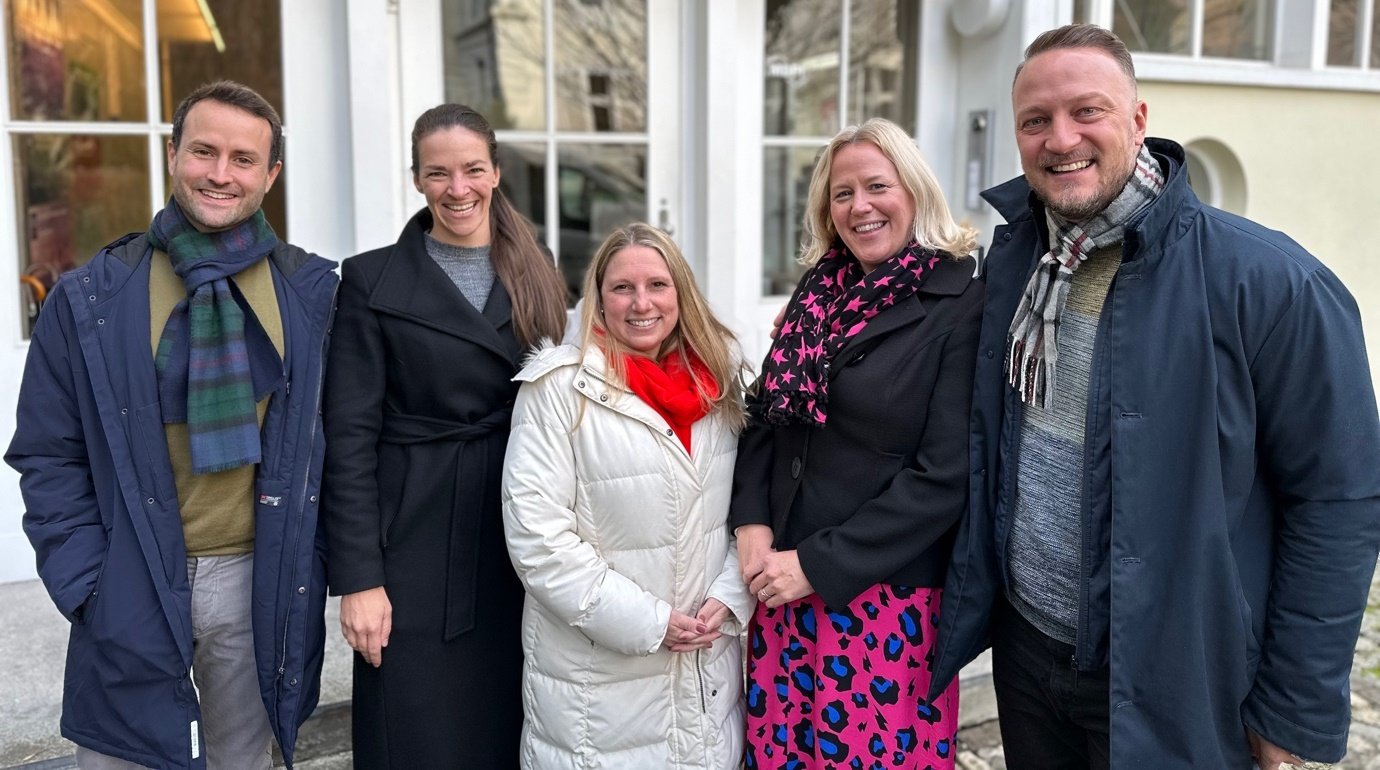
Left to right: Facundo Santomé (Senior Marketing Manager, MDPI), Constanze Shelhorn (Indexing Manager, MDPI), Cathy Holland (Director of Global Publisher Business Development, Digital Science), Helen Cooke (Managing Director of Publisher Sales, Digital Science), and Stefan Tochev (CEO, MDPI) in front of MDPI headquarters in Basel, Switzerland.
During our meeting, we discussed MDPI’s publishing philosophy and explored further avenues for collaboration. We look forward to continuing our partnership with Digital Science, aiming to improve our services yet further and meet the needs of our authors more closely than ever.
What is Altmetric?
You will notice that MDPI articles feature an Altmetric score, a colourful doughnut capturing the score in the upper right corner of the article page. This score represents ‘alternative metrics,’ as distinct from traditional metrics such as Impact Factor, CiteScore, and Scimago Journal Rank.
Altmetrics complement traditional citation-based metrics by capturing online discussions related to a specific research topic. By analyzing both sets of data, we can obtain a comprehensive understanding of the attention a particular research output receives and the sources in which it is mentioned.
“Almetric provides visual insights into where research is being discussed”
Sources Tracked by Altmetric
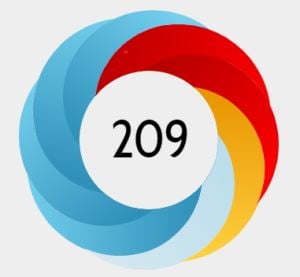
Altmetric badge showing the Altmetric score and colour-coded mention sources.
Altmetric monitors various sources, categorizing them into segments such as policy documents, peer reviews, Wikipedia, news and blogs, and social media, among other sources. Each category is identifiable by a specific colour.
The Altmetric badge provides visual insights into where the research is being discussed. A more colourful badge indicates broader mentions across multiple platforms. Such tracking enables us to gauge the extent of an article’s online dissemination, noting that increased visibility may correlate with higher citation rates.
Read more:
Impactful Research

Ten High-Altmetric Articles Published by MDPI
As at 30 January 2024, Altmetric has tracked 670,500 MDPI research outputs from MDPI, resulting in over 4.3 million mentions. This includes over 71,894 mentions in policy and patents and 294,714 mentions in news and blogs, with some achieving an Altmetric score as high as 28,754.
So, what is a good Altmetric score? There are various ways to put this score into context. You can find out more about the score in context and how to evaluate your work by this means.
Here are ten MDPI papers ranking in the top 5% of all research outputs scored by Altmetric.
|
|
“Accuracy in Wrist-Worn, Sensor-Based Measurements of Heart Rate and Energy Expenditure in a Diverse Cohort” J. Pers. Med. 2017, 7(2), 3; https://doi.org/10.3390/jpm7020003 Altmetric page: https://mdpi.altmetric.com/details/20477344 Altmetric shows that this article appeared in 253 news stories from 209 outlets including Forbes, BBC, and Fox News. |
|
|
“Daylight Saving Time and Acute Myocardial Infarction: A Meta-Analysis” J. Clin. Med. 2019, 8(3), 404; https://doi.org/10.3390/jcm8030404 Altmetric page: https://mdpi.altmetric.com/details/57654628 Altmetric shows that this article appeared in 295 news stories from 207 outlets including Forbes, The Atlantic, and New York Times. |
|
|
“The Preliminary Analysis of Cave Lion Cubs Panthera spelaea (Goldfuss, 1810) from the Permafrost of Siberia” Quaternary 2021, 4(3), 24; https://doi.org/10.3390/quat4030024 Altmetric page: https://mdpi.altmetric.com/details/111086701 Altmetric shows that this article appeared in 182 news stories from 134 outlets including CBC News, CNN, and National Geographic. |
|
|
“Not the Cat’s Meow? The Impact of Posing with Cats on Female Perceptions of Male Dateability” Animals 2020, 10(6), 1007; https://doi.org/10.3390/ani10061007 Altmetric page: https://mdpi.altmetric.com/details/83796184 Altmetric shows that this article appeared in 124 news stories from 98 outlets including VICE, CNN and The Guardian. |
|
|
“Behaviour and Welfare Impacts of Releasing Elephants from Overnight Tethers: A Zimbabwean Case Study” Animals 2022, 12(15), 1933; https://doi.org/10.3390/ani12151933 Altmetric page: https://mdpi.altmetric.com/details/133463915 Altmetric shows that this article appeared in 192 news stories from 186 outlets. |
How do I use altmetrics?
Altmetric Explorer provides a detailed step-by-step guide and instruction video for first-time users of the tool. The guide includes useful diagrams that make it easy to get started.
Sharing Research Online
For research to be tracked across different sources, Altmetric needs a research output with a persistent identifier: a DOI, ISBN, PubMed ID, handle ID, etc. When sharing research, it is important to include a link to the original research output.
|
|
“An Update on Eukaryotic Viruses Revived from Ancient Permafrost” Viruses 2023, 15(2), 564; https://doi.org/10.3390/v15020564 Altmetric page: https://mdpi.altmetric.com/details/142929875 Altmetric shows that this article appeared in 250 news stories from 180 outlets including CTV, Fox News, and CNN. |
|
|
“The Global Problem of Insufficient Sleep and Its Serious Public Health Implications” Healthcare 2019, 7(1), 1; https://doi.org/10.3390/healthcare7010001 Altmetric page: https://mdpi.altmetric.com/details/53406248 Altmetric shows that this article appeared in 252 news stories from 168 outlets including BBC, Harvard Business Review, and Forbes. |
|
|
“A Detailed Review Study on Potential Effects of Microplastics and Additives of Concern on Human Health” Int. J. Environ. Res. Public Health 2020, 17(4), 1212; https://doi.org/10.3390/ijerph17041212 Altmetric page: https://mdpi.altmetric.com/details/86529137 Altmetric shows that this article appeared in 197 news stories from 150 outlets including BBC, The Tribune, and World Economic Forum. |
|
|
“An Empirical Study of Chronic Diseases in the United States: A Visual Analytics Approach to Public Health” Int. J. Environ. Res. Public Health 2018, 15(3), 431; https://doi.org/10.3390/ijerph15030431 Altmetric page: https://mdpi.altmetric.com/details/34714141 Altmetric shows that this article appeared in 232 news stories from 149 outlets including Forbes, New York Times, and Harvard Business Review. |
|
|
“Garden Scraps: Agonistic Interactions between Hedgehogs and Sympatric Mammals in Urban Gardens” Animals 2023, 13(4), 590; https://doi.org/10.3390/ani13040590 Altmetric page: https://mdpi.altmetric.com/details/142934305 Altmetric shows that this article appeared in 172 news stories from 168 outlets including BBC. |
Inside MDPI

MDPI Annual Meeting Celebrations in China
On Thursday 25 January, over 1,300 MDPI colleagues from our two offices in Beijing gathered to kick off MDPI’s traditional ‘Annual Meetings.’ These celebrations take place in MDPI’s offices across China, including Dalian, Tianjin, Wuhan, and Nanjing.
The evenings include performances, informative talks and presentations, awards, and entertainment, providing an ideal platform to recognize our colleagues, celebrate their achievements, and set our sights on the future.
“It is essential that we stay connected and share best practices”

I sent a video congratulating everyone on their work and sharing our vision of building MDPI into the most trusted OA publisher, highlighting the roles each of us has to play in achieving that goal.
Unfortunately I could not join in person, but you may recall my recent trip, when I visited our offices in Beijing and Wuhan, which I look forward to visiting again this year.
Although our headquarters are in Basel, Switzerland, and we are expanding throughout Europe and North America, the majority of MDPI’s workforce is in China and throughout the Asia-Pacific region, including offices in Singapore, Thailand, Japan, and newly opened office in South Korea. It is essential that as a global organization, we stay connected and share best practices in order to grow collectively and continue providing the exceptional service to our authors.
The Annual Meeting is a moment to reflect and enjoy the year’s hard work and dedication.

I extend our best wishes to all for the Chinese New Year (Xīnnián kuàilè)!
Coming Together for Science
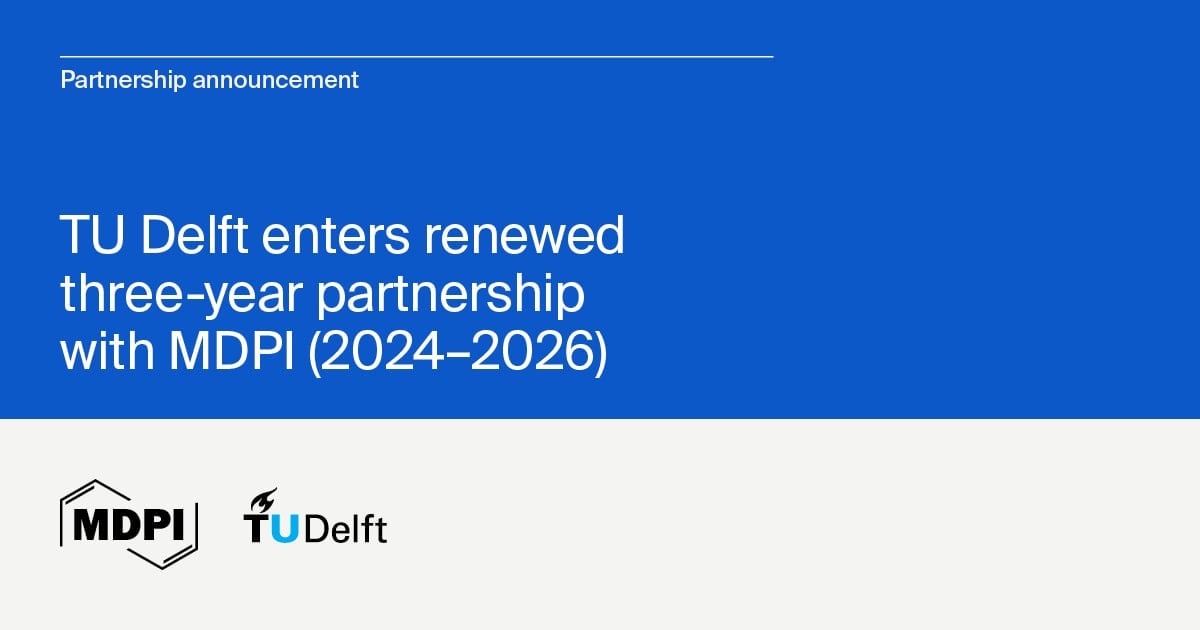
MDPI and TU Delft Adopt Flat Fee Model in Extended Partnership
We are excited to announce a renewed three-year partnership with Delft University of Technology (TU Delft) in the Netherlands. This collaboration introduces a fixed lump-sum fee, covering publishing costs from 2024 to 2026.
“This initiative reflects our dedication to transparent and inclusive publishing”
TU Delft-affiliated authors will enjoy cost-free publishing in any MDPI journal during this period, aligning with our commitment to removing barriers for open access publishing. The agreement supports Plan S compliance and facilitates a seamless publishing process for TU Delft corresponding authors. This initiative reflects our dedication to transparent and inclusive publishing, providing stability and predictability both for authors and for institutions.
For further details on our Institutional Open Access Program (IOAP), please contact us.
Benefits to MDPI’s IOAP
At MDPI we have a long tradition of partnerships, including our Institutional Open Access Program (IOAP). IOAP supports institutions through simplification, access, transparency, APC discounts, and institutional repository deposits. The program simplifies administrative processes, offers central payment, and allows easy opting in and out. Participants gain free access to Susy, MDPI’s online submission system, with extensive article metadata and exportable data. APC discounts and Book Processing Charge discounts are available for affiliated authors. Automated deposits to institutional repositories and streamlined matching of papers to IOAP participants enhance the overall experience.
For further information, see our IOAP FAQ.
Closing Thoughts

Reflections on the 2024 APE Conference
MDPI was proud to co-sponsor the Academic Publishing in Europe (APE) 2024 Conference that took place in Berlin, Germany, from 9–10 January 2024.
The conference theme, ‘Keep the Conversation Going!’, explored the evolving landscape of scholarly communication. APE is one of the key conferences I make a point to attend each year. January offers a valuable opportunity to engage with new contacts, reconnect with familiar faces, and participate in impactful discussions and presentations among professionals, scholars, and practitioners in the field.
“It's fascinating to see how other publishers are leveraging AI”
Highlights
Some of the standout panels for me include: the role of the UN Sustainable Development Goals (SDGs) within the publishing industry. It was encouraging to hear the current status quo, though I was eager also to learn about the exciting projects planned for 2024 and beyond. These will allow us to track progress in subsequent years. At MDPI, we remain committed to promoting Open–Access (OA) content on SDGs through scientific articles and books. Furthermore, we extend our commitment to sustainability by financially supporting researchers through initiatives such as the World Sustainability Award and the Emerging Sustainability Leader Award, as well as waiving the APC for feature papers on each SDG.
In recent years, discussions on AI have become increasingly prominent at such conferences. It’s fascinating to see how other publishers are leveraging AI to meet the evolving needs of their audiences while at the same time using it to safeguard the scientific process. Other engaging panels that I enjoyed included updates on transformation beyond transformative agreements, the principles of lean change, incentive structures related to research integrity, and the panel on reviewer incentives.
“We can share best practices and lessons learned”
Incorporating MDPI’s Insights into Conferences
I must confess that I sometimes feel overlooked when MDPI is not invited to participate in crucial industry discussions. As the leading open access publisher and the third-largest publisher overall, we possess extensive experience in many of these areas and can offer valuable contributions to these discussions. We can share best practices, lessons learned, and our thinking about future trajectories. For instance, in panels discussing reviewer incentives, at MDPI we offer a discount voucher to reviewers for future submissions, reflecting our commitment to fostering a robust peer review process. In 2022 alone, MDPI collected over 1.4 million peer review reports, informing the decision-making processes of our editors. Given our expertise in these areas, it would be natural to include MDPI in such discussions. I therefore extend an invitation to future conference organizers to consider MDPI for speaking engagements and collaborative opportunities.
Chief Executive Officer
MDPI AG
23 January 2024
Acknowledgment of the Reviewers of Agronomy in 2023
In recognizing the exceptional efforts of our reviewers in 2023, we express our sincere gratitude for upholding the high standards of Agronomy. Their commitment ensured the rigorous peer review that is integral to quality academic publishing.
In 2023, Agronomy received 11,396 review reports, from 6,930 reviewers. This past year, we worked with reviewers from 108 countries and regions, reflecting the diversity in our collaboration with research communities. Their dedication shapes scholarly discourse and advances global research. The editorial team expresses gratitude for the vital role played by each reviewer in the Agronomy family throughout 2023, and we look forward to their continued support in 2024.
The following are the reviewers who have consented to show their names:
| A. Abdul Kader Jailani | Kiwon Lee |
| Aamir Shakoor | Kiyosumi Hori |
| Abazar Ghorbani | Kleomenis Kalogeropoulos |
| Abdallah Hassanin | Klikocka Hanna |
| Abdallah Tageldein Mansour | Knut Solhaug |
| Abdel Razzaq Mohammad Al Tawaha | Komil Astanakulov |
| Abdelaaty Shahat | Komla Ganyo |
| Abdelali Boussakouran | Konstantinos Kasiotis |
| Abdelaziz Htitiou | Kordali Saban |
| Abdelghani Nabloussi | Kostas Ioannidis |
| Abdel-Moety Salama | Kresimir Pavlic |
| Abdelnaser Elzaawely | Kristijan Franin |
| Abdel-Nasser El-Sheshtawy | Kristijan Lenac |
| Abdelraouf Ali | Kristina Laužikė |
| Abdul Gafur | Krisztián Balogh |
| Abdul Ghafoor | Krisztina Bela |
| Abdul Jalal | Krunoslav Mirosavljević |
| Abdul Kaium | Krystyna Ciarkowska |
| Abdul Mannan | Kseniia Nepeina |
| Abdul Sattar | Kuldeepsingh A. Kalariya |
| Abdullah Ulas | Kun Li |
| Abdullahi Alhassan | Kun Zhang |
| Abdulwahab Hafez | Kyriakos Giannoulis |
| Abhik Patra | Lacrimioara Senila |
| Abolfazl Nasseri | Ladislav Holik |
| Abolghassem Emamverdian | Laima Česonienė |
| Aboyeji Christopher | Larisa Fedoreyeva |
| Abraham Loera-Muro | László Csambalik |
| Abu El Eyuoon Abu Zied Amin | Laszlo Fodorpataki |
| Adam Masłoń | László Orlóci |
| Adam Rajsz | Laszlo Radocz |
| Ádám Tölgyesi | Laura De Palma |
| Adão Santos | Laura Depalo |
| Adarsh K. Gupta | Laura Luongo |
| Adelaide Perdigão | Laura Meno Fariñas |
| Adelina Dumitras | Leandro Cordova |
| Adetoso Adetoro | Leandro de Godoy |
| Adham Al-Sagheer | Lei Dong |
| Adijailton De Souza | Lei Zhang |
| Adil Mihoub | Lenka Lackóová |
| Adilet Sugirbay | Leon Higley |
| Adilson Souza | Leon Muntean |
| Aditi Satpute | Léon Parent |
| Adnan Noor Shah | Leonardo Conti |
| Adnane Beniaich | Leonardo Micheli |
| Adnane El Yaacoubi | Leonardo Ornella |
| Adolfo Peña-Acevedo | Leonardo Rossi |
| Adre Minnaar-Ontong | Leonid Kaluzhskiy |
| Adriana Sestras | Leonid Perelomov |
| Adriano Saquet | Leonidas Sotirios Kyrgiakos |
| Adrienn Széles | Lerato Seleteng-Kose |
| Aftab Jamal | Leslaw Teper |
| Agathos Filintas | Leszek Sieczko |
| Agnieszka Gniazdowska-Piekarska | Levente Levei |
| Agnieszka Rosińska | Liang Huang |
| Agnieszka Rutkowska | Liangliang Liu |
| Agnieszka Synowiec | Liaqat Shah |
| Agnieszka Szewczyk | Libo Zhang |
| Agnieszka Wysocka-Czubaszek | Lida Fuentes-Viveros |
| Agossou Gadedjisso-Tossou | Lidia Lomovatskaya |
| Ahmad Ali | Lihua Wang |
| Ahmad Khan | Lijian Zheng |
| Ahmad Omar | Li-Jun Huang |
| Ahmed Abdelkhalek | Lili Lei |
| Ahmed Abou-Shady | Lin Huang |
| Ahmed Aioub | Lin Li |
| Ahmed Ateya | Lina Butkevičienė |
| Ahmed Awad | Lin-Fu Liang |
| Ahmed Chacón-Iznaga | Linjun Yao |
| Ahmed Darwish | Linxuan Li |
| Ahmed Eid | Lira Gaysina |
| Ahmed Elbeltagi | Liv Severino |
| Ahmed El-Sawah | Li-Wei Liu |
| Ahmed El-Shafei | Lixia Wang |
| Ahmed Gad | Liyun Liu |
| Ahmed Khadr | Long Qian |
| Ahmed Kheir | Longlong Zhao |
| Ahmed Nour El-Deen | Loredana Sigillo |
| Ahmed Shaaban | Lorella Navazio |
| Ahmed Yousef | Lorena Barra-Bucarei |
| Ahmet Celen | Lorena Parra |
| Aikaterni Molla | Lorenzo Barbanti |
| Aivars Aboltins | Louise Egerton Warburton |
| Ajaz A Lone | Lu Feng |
| Akebe Luther King Abia | Luambo Jeffrey Ramarumo |
| Akhilesh Kumar Pandey | Ľubomír Lichner |
| Akihiro Yamamoto | Luca Incrocci |
| Alaa El-Dein Omara | Lucas Braos |
| Alba Du Toit | Lucia Bailoni |
| Alberto Jorge Oliverira Lopes | Lucia Cattani |
| Alberto Pardossi | Lucian Copolovici |
| Alberto Sassu | Lucie Jezerska |
| Alejandro Pereira-Santana | Ludovina Galego |
| Alejandro Pérez Pastor | Ludwika Tomaszewska-Hetman |
| Aleksandar Ašonja | Luigi Alessandrino |
| Aleksandar Shkondrov | Luis Aristizabal |
| Aleksandar Simić | Luis Conceição |
| Aleksandr Ignatov | Luis Eduardo Akiyoshi Sanches Suzuki |
| Aleksandra Mikhailidi | Luis Miguel Igreja Aires |
| Aleksandra Radanovic | Luis Roca-Pérez |
| Aleksandra Trzewik | Luis Viteri |
| Aleksandra Wilczyńska | Łukasz Gryko |
| Aleksey Rogachev | M C Grafton |
| Aleksey Troitsky | M. Arun |
| Alena Zhelezova | M. Sameiro Gonçalves |
| Alessandro Giraudo | Madeleine Günthardt-Goerg |
| Alessandro Suardi | Madhab Sen |
| Alessia Corami | Magdalena Jastrzębska |
| Alessia Farina | Magdalena Knežević |
| Alessio Castagnoli | Magdalena Piekutowska |
| Alexander Deryabin | Magdalena Rys |
| Alexander Fedotov | Magdalena Ryżak |
| Alexander Kartashov | Magdalena Szeliga |
| Alexander Lukatkin | Maged Mohammed |
| Alexander Mraz | Maha Krayem |
| Alexander Smirnov | Mahdi Hasanlou |
| Alexander Uzhinskiy | Mahdi Jalali |
| Alexander Voronkov | Mahfouz Abd-Elgawad |
| Alexandre Jardim | Mahfuz Rahman |
| Alexandre Santos | Mahmoud F. Seleiman |
| Alexandros Spournias | Mahmoud Nasr |
| Alexandru Apahidean | Mahmut Camlica |
| Alexey Andreychev | Maikel Castellano-Pozo |
| Alexey Kutyrev | Maja Meseldzija |
| Alexey Morgounov | Maksim Moskovskiy |
| Alexey Panov | Małgorzata Baćmaga |
| Alfredo Emilio Rubio-Casal | Małgorzata Grzelak |
| Ali Mashaallah Kermani | Małgorzata Holka |
| Ali Raza | Małgorzata Reda |
| Alicia Ayerdi Gotor | Mamdouh Awad-Allah |
| Alicia Maroto | Mamdouh Eissa |
| Alicja Pecio | Mamdouh El Haj Assad |
| Aliki Kapazoglou | Manjit Kaur |
| Alina Calin | Manne Munikumar |
| Alina Momot | Manoj Kumar |
| Alina Stachurska-Swakoń | Mansor Hakiman |
| Alina Truta | Manuel Martinez -Estevez |
| Alireza Pour-Aboughadareh | Manuel Melendo Luque |
| Alireza Tarinejad | Manuel Moncada |
| Aliya Naz | Manuel Pramsohler |
| Alla Solovyeva | Manzar Abbas |
| Alma Delia Roman-Gutierrez | Maorun Fu |
| Alok Sharma | Mara Quaglia |
| Alsu Lubyanova | Marcel Miranda |
| Alvaro Iván Peña Neira | Marcello Cutuli |
| Amal Elgharbawy | Marcelo Becker |
| Amalio Santacruz-Varela | Marcelo Silva |
| Amin Zehtabian | Márcia Araújo |
| Amine Dahane | Marcia Astorga–Eló |
| Amine Rkhaila | Marcin Różewicz |
| Amine Saddik | Marcin Siłuch |
| Aminur Rahman | Marcin Widomski |
| Amir Benzaoui | Marcio Basilio |
| Amira Lbrahim | Marcio Martinello Sanches |
| Amit Singh | Marcio Mesquita |
| Amjad Hussain | Marco Pietrella |
| Amr Mohamed | Marco Savona |
| Amr Tolba | Marcos Schimalski |
| Amro Amara | Marcos Vinícius da Silva |
| Ana Angelica Feregrino-Perez | Marek Brennensthul |
| Ana Cazacu | Marek Bury |
| Ana Coelho Marques | Marek Rašovský |
| Ana Elisa Rato | Margarita Bakaeva |
| Ana Gonzalez | Margherita Beruto |
| Ana Hortência Fonseca Castro | María Ayelén Pagani |
| Ana Luisa Garcia Oliveira | María C. Florido |
| Ana Marta-Costa | Maria Carola Fiore |
| Ana Mutis Tejos | Maria Chernysheva |
| Ana Tomić | Maria de Fátima Oliveira |
| Anabel Fernandez | Maria Dinu |
| Anamaria Vâtcă | Maria do Carmo Horta |
| Anamika Pandey | Maria Elena Latino |
| Anastasia Nikologianni | Maria Fomicheva |
| Anastasios Alatzas | Maria Geneva |
| Anastasios Darras | Maria Isabella Sifola |
| Anastasiya Popova | María Jesús Navarro |
| Anatoliy Kazak | Maria Joé Delgado Iniesta |
| Anayat Mir | Maria Manuela Silva |
| Anbes Tenaye Kidane | Maria Menshakova |
| ANCA BABEȘ | María Pérez-Fernández |
| André Chanzy | Maria Perez-Lopez |
| Andrea Battistoni | María Pilar González-Hernández |
| Andrea Mastinu | María Sánchez-Coronado |
| Andrea Neri | Maria Strano |
| Andrea Peruzzi | Maria Teresa Ceccherini |
| Andrea Toledo | Mariana Grohar |
| Andreas Pacholski | Mariana Hristova |
| Andrei Kuzin | Mariana Saucedo-García |
| Andres Barajas-Solano | Marianna Makádi |
| Andres Hirigoyen | Marianna Molnárová |
| Andres Sanabria-Velazquez | Mariano Fos |
| Andrew Gichira | Marie Bipfubusa |
| Andrew J | Marijenka Tabaković |
| Andrew Macrae | Marina Koether |
| Andrey Belov | Marina Roumiantseva |
| Andrey Bogomolov | Mario Salazar |
| Andrey Nagdalian | Mario Sraka |
| Andrey Yurkov | Marioara Nicoleta Filimon |
| Andrzej Blecharczyk | Mariola Kozłowska |
| Andrzej Kasperski | Mariola Michałowska |
| Andrzej Klasa | Mariola Staniak |
| Andrzej Kotyra | Marios Spiliotopoulos |
| Andrzej Salata | Mariusz Kormanek |
| Andrzej Wysokinski | Mariusz Kulik |
| Andrzej Zolnowski | Mark Mazzola |
| Anestis Karkanis | Mark Nelson |
| Aneta Sulborska-Różycka | Mark Widrlechner |
| Ángel Antonio Carbonell-Barrachina | Marketta Rinne |
| Ángel Javier Aguirre de Juana | Marko Karoglan |
| Angel Llamas | Marko Kostić |
| Angela Bisio | Markus Eitle |
| Angela Méndez-Yáñez | Marlena Kycko |
| Angela Piergiovanni | Marta Cebulska |
| Angélica Bautista‐Cruz | Marta Stankiewicz-Kosyl |
| Angelo Mazzaglia | Martin Potgieter |
| Ani Akpinar | Martin Raspor |
| Anil Khar | Martinez-Pacheco Mauro M. |
| Anil Meher | Martis Georgiana |
| Anilkumar C. | Marwa M. Ragaey |
| Anirban Bhar | Marwa Moumni |
| Anirudha Chattopadhyay | Maryam Mohammadi-Aragh |
| Anis Elaoud | Maryna Nehrey |
| Anita Liška | Marzena Gibczyńska |
| Anita Osvalde | Marzena Sujkowska-Rybkowska |
| Anita Silvana Ilak Peršurić | Marzieh Alizadeh |
| Anjana J. Atapattu | masoud nobahar |
| Anjana Vala | Masoud Shams-Bakhsh |
| Ankica Sarajlić | Massimo Blandino |
| Anna Brilkina | Massimo Brambilla |
| Anna Jama-Rodzeńska | Massimo Fagnano |
| Anna Jaroszewska | Massimo Zacchini |
| Anna Kitaeva | Matei Marcel |
| Anna Maria Mercuri | Matia Mainardis |
| Anna Szakiel | Matteo Garau |
| Anna Tsyganova | Maura Calliera |
| Anna Vetrova | Maurizio Capuana |
| Anna Zavarzina | Maurizio Mulas |
| Annapia Ferrara | Mauro Martínez |
| Anne Anderson | Mauro Maver |
| Antonio Blanco | Mautusi Mitra |
| Antonio Cabrera Ariza | Maximilian Lackner |
| Antonio Comparetti | Mayank Gururani |
| Antonio Di Martino | Md. Mazharul Islam |
| Antonio Lidón | Md. Abu Ayub Siddique |
| Antonio Ortiz | Md. Arif Sakil |
| António Ribeiro | Md. Humayun Kabir |
| Antonio Santos-Rufo | Md. Nurul Matin |
| Antonio Satriani | Medhat Elnaggar |
| Antônio Souto | Megan House |
| Antonio Zapata Sierra | Mehdi Rezaei |
| Antonios Augustinos | Mehmet Yaman |
| Anuj Kumar | Mehmet Zahit Yeken |
| Anuradha Singh | Mekala Venkatachalam |
| Anurag Malik | Meng Xu |
| Anusorn Cherdthong | Mercè Llugany |
| Aobo Huang | Mercedes Fourment |
| Aparna Phalke | Michael Grodowitz |
| Apoorv Tiwari | Michael Newton |
| Arabela Untea | Michael Silveira Thebaldi |
| Arafat Abdel Latef | Michael Vrahnakis |
| Arbindra Timilsina | Michail Orfanoudakis |
| Aristidis Matsoukis | Michal Kalina |
| Arkadiusz Artyszak | Michał Napierała |
| Arkadiusz Stępień | Michał Stępień |
| Armando Robledo-Olivo | Michał Tomaszewski |
| Armindo Melo | Michel Brondani |
| Áron Béni | Michele De Santis |
| Áron Török | Michelle Yoo |
| Árpád Székely | Miguel Ángel González Moreno |
| Artem Manyakhin | Miguel Martínez-Téllez |
| Artur Banach | Miguel Segura-Castruita |
| Artyom Gusarov | Miguel Valdes |
| Arun Shanker | Mihaela Kavran |
| Arvind Negi | Mikhail Beklemishev |
| Asad Rokhzadi | Mikhail Komissarov |
| Ashok Kumar | Milan Koszel |
| Ashvinkumar Katral | Milan R. Nikolić |
| Ashwani Aggarwal | Milana Trifunović-Momčilov |
| Asif Iqbal | Milena Đorđević |
| Asmaa Abdelbaki | Milena Kercheva |
| Asmaa Abdella | Milica Aćimović |
| Asmuni Mohd Ikmal | Ming Guo |
| Asya Ovsepyan | Ming-Der Lin |
| Atefeh Sabouri | Mingxing Cheng |
| Attila Nagy | Mingxiong Ou |
| Atul Saini | Mingyuan Du |
| Audrius Kačergius | Mioara Bercu |
| Augusto Costa | Miona Belović |
| Aurel Maxim | Mira Ionica |
| Aurelio Ciancio | Mircea Muntean |
| Aurelio Scavo | Mirela Florina Calinescu |
| Ayesha Mustafa | Mirela Tomaš-Simin |
| Aytug Tuncel | Miriam Bazzicalupo |
| Babar Hussain | Mirjam Vujadinovic Mandic |
| Babar Iqbal | Mirjana Ljubojević |
| Babić Vojka | Miroslav Juráček |
| Baher Amer | Miroslav Šlosár |
| Bai Lianyang | Miroslava Rakocevic |
| Baji Shaik | Mirosław Wyszkowski |
| Balwinder Kumar | Mitra Serajazari |
| Baolong Wang | Mladen Petreš |
| Baowei Guo | Mohamad Awad |
| Bappa Das | Mohamad Fairus Rabuni |
| Barbara Breza-Boruta | Mohamad Hesam Shahrajabian |
| Barbara Frąszczak | Mohamed AbdelRahman |
| Barbara Futa | Mohamed Addi |
| Barbara Jagosz | Mohamed Ait-El-Mokhtar |
| Barbara Karleuša | Mohamed Anli |
| Barbara Wiewióra | Mohamed Attia |
| Barbara Wiśniowska-Kielian | Mohamed El Gharous |
| Barlin Olivares Campos | Mohamed Elsayed |
| Bartłomiej Cieślik | Mohamed El-Soda |
| Bashir Adelodun | Mohamed Ewis Abdelaziz |
| Bashistha Kanth | Mohamed Fadl |
| Beata Cieniawska | Mohamed Kalaba |
| Beata Łabaz | Mohamed Magdy Mansour |
| Beata Michalska-Klimczak | Mohamed Mohamed |
| Beatrice Farda | Mohamed Mohamed Kamara |
| Bed Prakash Bhatta | Mohamed Sharaf |
| Behnam Asgari Lajayer | Mohammad Alebrahim |
| Belaghihalli Gnanesh | Mohammad Ghorbani |
| Ben Ingram | Mohammad Mehdizadeh |
| Beppe Benedetto Consentino | Mohammad Reza Rahdari |
| Berger Andres | Mohammad Sadat-Hosseini |
| Bernardo Chaves Cordoba | Mohammad Saidur Rhaman |
| Bernardo Ernesto Lechner | Mohammadmehdi Maharlooei |
| Bikarma Singh | Mohammed Ali |
| Biljana Balen | Mohammed Aourach |
| Biljana Lončar | Mohammed Ibrahim |
| Bimal Ghimire | Mohammed Mechee |
| Bin Guo | Mohd. Kamran Khan |
| Bin Wu | Mohsen Ramadan |
| Bin Yang | Moises Roberto Vallejo Perez |
| Binbin Zhang | Mona Alwahibi |
| Bing Liu | Mónica Ramírez-Mella |
| Bingjian Cui | Monika Sporek |
| Birol Akbaş | Morgan Brisse |
| Biser Hristov | Mortaza Khodaeiaminjan |
| Bishnu Prasad Kandel | Moses Aborisade |
| Blazo Lalevic | Mostafa Shooshtari |
| Bo He | Mouna Ghorbel |
| Bo Xu | Mountasser Douma |
| Bofang Yan | Mourad Jbene |
| Bogdan Kulig | Mpho Mafa |
| Bo-Keun Ha | Müge Şahin |
| Bonifacio Mostacedo | Muhammad Abdul Rehman Rashid |
| Boris Boiarskii | Muhammad Abdullah Saleem |
| Boris Kozlovsky | Muhammad Adnan Bodlah |
| Borislav Banjac | Muhammad Afzal |
| Bouayad Noureddin | Muhammad Ahsan Asghar |
| Boyu Kuang | Muhammad Anwar |
| Bozena Debska | Muhammad Azeem |
| Bozidar Benko | Muhammad Faheem Adil |
| Branislav Olah | Muhammad Fasih Khalid |
| Branislav Šiler | Muhammad Hassan |
| Burak Kaleci | Muhammad Ishaq Asif Rehmani |
| Camelia Betianu | Muhammad Moaaz Ali |
| Camilo López-Cristoffanini | Muhammad Moshiur Rahman |
| Caradus John | Muhammad Munir |
| Caridad Pérez-de-los-Reyes | Muhammad Rao |
| Carla Gouveia | Muhammad Sohail Memon |
| Carlindo Rodrigues | Muhammad Tahir |
| Carlo Leifert | Muhammad Waheed Riaz |
| Carlos Serodio | Muhammad Zafar |
| Carlos Alejandro Granados-Echegoyen | Mukesh Meena |
| Carlos Diaz Delgado | Mukesh Mehata |
| Carlos Reis | Mukesh Mukesh |
| Carmelina Spanò | Murat Koklu |
| Carmen Feller | Nabil Radouane |
| Carmen Jaren | Nada Mostafa |
| Carmen Marín | Nadeem Iqbal |
| Carmen Recondo | Nadezhda Golubkina |
| Carolina Bonini | Nadezhda Shimalina |
| Carolina Keim | Naga Raghuveer Modala |
| Carolina Mancho Alonso | Nalladurai Kaliyan |
| Carolina Sanhueza | Nan Wu |
| Carolina Toranza | Naoki Moritsuka |
| Catello Di Martino | Naqib Khan |
| Cengiz Toker | Naser Valizadeh |
| Ceres Duarte Guedes Cabral de Almeida | Nashwa Sallam |
| Cesar Flores | Nasrullah Khan |
| Cesar L. Aguirre-Mancilla | Natalia Georgieva |
| César Márquez-Quiroz | Natalia Ivanovna Zakharova |
| Cezary Beker | Natalia Naumova |
| Cezary Podsiadło | Natalia Repkina |
| Chaitanya Prasad Nath | Natalia Rudenko |
| Chamindra Vithana | Natalia Statsyuk |
| Chandra Shekhar Misra | Natalia Zagoskina |
| Chang Chen | Natalie Homer |
| Chang Wei Hsieh | Natalya Ivanova |
| ChangEon Park | Naveen Dixit |
| Changquan Zhang | Nawroz Tahir |
| Chao Shen | Nay Myo Win |
| Chao Zhang | Nayara Estrabis |
| Chao Zhao | Nazmul Hasan |
| Chaolei Liu | Nazneen Hussain |
| Cheng Chang | Nebojsa Ilic |
| Cheng Li | Nebojsa Pantelic |
| Chenghao Chen | Neela Satheesh |
| Chengming Luo | Neeraj Singh |
| Chengwu Zou | Nektaria Adaktylou |
| Chet Ram | Nelly Datukishvili |
| Chi Zhang | Nemanja Rajčević |
| Chiara Piccini | Neveen Talaat |
| Chih-Wen Wu | Nevien Elhawat |
| Chin Jian Yang | Niaz Ahmed |
| Chinnaiah M C | Nicola Giannoccaro |
| Chitrabhanu Sharma Bhunjun | Nicolás Verdugo-Vásquez |
| Chong Luo | Nicolaza Pariona |
| Chotika Yokthongwattana | Nicoleta Radu |
| Chris Dritselis | Nicoleta Ungureanu |
| Chris Johansen | Nicoleta-Aurelia Chira |
| Christell Van Der Vyver | Nicolò Iacuzzi |
| Christian R. Encina-Zelada | Niels P. Louwaars |
| Christian Tellgren-Roth | Nigel Quinn |
| Christopher Guppy | Nikolai Ravin |
| Christopher Menzel | Nikolaos Kalatzis |
| Christopher Ngosong | Nikolaos Malamos |
| Christos Tsadilas | Nikolaos Tsakiridis |
| chuanqing zhang | Nikolay Kiktev |
| Chunce Guo | Nikolay Samotaev |
| Chuntao Yin | Nikon Vassilakos |
| Chunyan Li | Ning Liu |
| Chuyen Hoang | Ning Yuan |
| Claire Wittling | Nkosinomusa Buthelezi-Dube |
| Claudia Delgadillo | Nkulu-Kabange Rolly |
| Claudio Araújo Paredes | Nobuhito Sekiya |
| Claudio Ciavatta | Noe Aguilar-Rivera |
| Clécia Cristina Guimarães | Noor Muhammad |
| Concetta Cardillo | Nóra Drienyovszki |
| Concha Gómez-Mena | Nour Eddine ES-Safi |
| Constancio Asis | Nutricati Eliana |
| Corine Davids | Oana Parvulescu |
| Cosmas Wacal | Ofelia Valdés-Rodríguez |
| Creola Brezeanu | Ofer Beeri |
| Cristian Alionte | Oksana Belous |
| Cristian Gergichevich | Oksana Kremneva |
| Cristian M.O. Lépori | Oksana Lastochkina |
| Cristian Malavert | Oleg Yakhin |
| Cristian Mălinas | Olesia Havryliuk |
| Cristian Moreno García | Olga Baranova |
| Cristina González-Montelongo | Olga Druzhinina |
| Cristina Stancă-Moise | Olga Mitrofanova |
| Csaba Bojtor | Olga Nesterova |
| Dafang Wu | Olga Panfilova |
| Dafeng Hui | Olga Rogova |
| Dajana Kučić Grgić | Olga Tsivileva |
| Dalasanuru Chandregowda Manjunathagowda | Olimpia Iordănescu |
| Damiano Spagnuolo | Olimpia Mintas |
| Dan Vârban | Olivera Stajkovic-Srbinovic |
| Daniel El Chami | Oluibukun Ajayi |
| Daniel Liberacki | Oluwaseyi Olanrewaju |
| Daniel Noe Coaguila Nuñez | Omar Romero-Arenas |
| Daniel Ramos | Ömer Faruk Coşkun |
| Daniel Rodriguez | Onofrio Davide Palmitessa |
| Daniel Wasonga | Osama Atallah |
| Daniela Avetisyan | Osama Elsherbiny |
| Daniela Pacifico | Oscar Andreu-Sánchez |
| Daniele Sarri | Oskars Bikovens |
| Daniele Schiavi | Osvaldo Ferrarese-Filho |
| Danijela Arsenov | Otilia Ana Culicov |
| Danilo Marandola | Ozkan Kaya |
| Danish Ibrar | P.M.Durai Raj Vincent |
| Danka Radic | Pabitra Das |
| Danuta Drzymulska | Pablo Octavio-Aguilar |
| Daria Balycheva | Pablo Tejedo |
| Darija Jodaugiene | Pabrício Lopes |
| Darius Kviklys | Palaniselvam Kuppusamy |
| Dariusz Gozdowski | Pál-Fám Ferenc István |
| Darko Božanić | Palo Loke |
| Darko Jevremovic | Paloma Sánchez-Torres |
| Darshan Sharma | Palvi Malik |
| David Alors | Pamela Durán-Díaz |
| David Douches | Panagiotis Kalozoumis |
| David Emanuel Reyes-Guerrero | Panagiotis Kanatas |
| David Hernandez-Lopez | Panayiotis G. Dimitriadis |
| David Inouye | Pankaj Kaushal |
| David Lopes | Pankaj Kumar |
| David Matamoros | Pantazis Georgiou |
| David Midmore | Paolo Carletti |
| David Peña | Paolo Mulè |
| David Pérez-Neira | Paolo Nasta |
| David Studholme | Parviz Heidari |
| Davide Gerna | Pascal Ratet |
| Davide Neri | Pasquale Napoletano |
| Davie Kadyampakeni | Patchanee Charoenying |
| Davor Petrović | Patricia Almendros |
| Davorka K Hackenberger | Patricia Giraldo |
| Davut Karayel | Patricia Iweka |
| Dawei Xue | Patricio Muñoz Torres |
| Deborah Heuschele | Patricio Sandaña |
| Deborah Rondanini | Patrick Martin |
| Deen Mohammad Deepo | Patrick Materatski |
| Deep Raj | Patryk Hara |
| Deepa Raveendranpillai | Paul Sestras |
| Deepak Kumar | Paula María Triviño-Tarradas |
| Deepranjan Sarkar | Paula Pérez-Rodríguez |
| Deived Uilian de Carvalho | Paula Pinto |
| Dejene Mengistu | Paulina Supel |
| Demetrio Antonio Zema | Paulo Carteri Coradi |
| Denis Beliaev | Pavel Banerjee |
| Denis Yanykin | Pavel Dmitriev |
| Denisa Jucan | Pavel Fuksa |
| Denitsa Teofanova | Pavel Kic |
| Desale Kidane | Pavel Kostylev |
| Desimir Knežević | Pavlina Drogoudi |
| Dessislava Ganeva | Pedro Brito |
| Devendra Jain | Pedro Cerezal-Mezquita |
| Devendra Singh | Pedro de Souza Campos |
| Deyvid Marques | Pedro Guirao |
| Dhananjay Pandey | Pedro Henrique Monteiro |
| Diaa Abd El Moneim | Pedro Palencia |
| Diana Constantinescu-Aruxandei | Pedro Piedras |
| Diana Paiva | Pedro Romon-Ochoa |
| Diego Cunha-Zied | Pedro Soares |
| Diego Gomez De Barreda Ferraz | Pedro Vicente Mauri |
| Diego Quiroga | Pei-Luen Lu |
| Diego Sauka | Peng Chen |
| Dijana Topalovic | Peng Jiang |
| Dilier Viciedo | Peng Song |
| Dimitrios Koilakos | Pengxiang Wu |
| Dimitris Bouranis | Peplinski Benedykt |
| Dimosthenis Kizis | Petar Antov |
| Dina Rešetar Maslov | Peter A. Roussos |
| Dino Dobrinić | Peter Ampim |
| Dionisios Gasparatos | Peter Evseev |
| Dipali Srivastava | Peter Ragalyi |
| Dirk Landgraf | Peter Sharp |
| Dirk W. Lachenmeier | Peterson Wambugu |
| Divna Simić | Petr Dvořák |
| Dmitry Budnikov | Petra Schneider |
| Dmitry Ruban | Petri P. Kärenlampi |
| Dobrin Cosmin | Petya Christova |
| Dong Hu | Philippe Chatelet |
| Dongchan Kim | Philippe Nacry |
| Dongchu Li | Photini Mylona |
| Dong-Liang Huang | Pierluigi Rossi |
| Donn Johnson | Ping Li |
| Dorijan Radočaj | Piotr Borowik |
| Dorin Sumedrea | Piotr Celary |
| Doudou Chang | Piotr Iwaniuk |
| Douglas Hayes | Piotr Rybacki |
| Douglas J. H. Shyu | Piotr Sołowiej |
| Dr. Amanullah | Piotr Szymczyk |
| Dr. Sajjad Ali | Piotr Zydlik |
| Dragana Bozic | Potshangbam Nongdam |
| Dragana Jakovljević | Poulami Sarkar |
| Dragana Stamenov | Pradeep Panda |
| Dragana Šunjka | Pradip Bhattacharrya |
| Draghici A Reta | Prakash Adhikari |
| Dragoljub Bajic | Pramod Sreedharan |
| Dthenifer Santana | Prasanta K. Subudhi |
| Dubravka Purgar | Prashant Kaushik |
| Dulce Flores-Rentería | Prashant Sharma |
| Duminda Vidana Gamage | Pratyush Routray |
| Dumitru Tucu | Praveen Kumar Sekharamantry |
| Dung Ha-Tran | Praveen Pandey |
| Durgasha Poudyal | Priyank Mhatre |
| Durgesh Jaiswal | Przemysław Kopeć |
| Eastonce T. Gwata | Pura Marín-Sanleandro |
| Edgar Gutiérrez-Castorena | Purabi Banerjee |
| Edgar Roman-Rangel | Qazi Mudassar Ilyas |
| Edgardo Sepulveda | Qi He |
| Edit Hoyk | Qianbing Zhang |
| Édson Bolfe | Qiang LI |
| Eduardo Alvarez Duarte | Qiang Xu |
| Eduardo Sánchez García | Qiangsheng Wu |
| Edwin Villagran | Qiankun Fu |
| Edyta Małachowska | Qianwen Zhang |
| Efstathia Lazaridi | Qibin Yu |
| Egidijus Šarauskis | Qibo Tao |
| Eiriki Sunamura | Qikui Wu |
| Eirini Karanastasi | Qing Yan |
| Ekaterina Chebykina | Qingfeng Miao |
| El Hadi Erbiai | Qingqing Xiao |
| El hajji Mohamed | Qiyan Jiang |
| El Khalil Cherif | Quan Nguyen Van |
| El Mehdi Cherrat | Quoc-Hung Phan |
| Elena A. Domblides | R. Pandiselvam |
| Elena Ambros | Raafat El-Nmaky |
| Elena Andreeva | Rabin Bhattarai |
| Elena Antonova | Rachid Sabbahi |
| Elena Derunova | Rade Stanisavljević |
| Elena Fedorova | Radosław Barczak |
| Elena García Campos | Radu Racovita |
| Elena Nadeeva | Radu Sumalan |
| Elena Ramírez-Parra | Rafael Celaya |
| Elena Rogozina | Rafael Macedo-Barragán |
| Eleni Symeonaki | Rafał Górski |
| Eleni Tsaliki | Ragán Péter |
| Eleonora Nistor | Raghavendra Singh |
| Elina Yankova-Tsvetkova | Raghvendra Pratap Singh |
| Elio Romano | Raja Asad Ali Khan |
| Elisa Masi | Rajeev Padbhushan |
| Elisabetta Franchi | Rajendra Acharya |
| Elisete Mourão | Rajendra Yadav |
| Eliza Gaweł | Rajendran Kamalabai Selvakesavan |
| Elkamil Tola | Raju Balaji |
| El-Kazafy Taha | Rakesh Kumar |
| Elnaz Amirahmadi | Ralf Blank |
| Eloy Conde Barajas | Ram Bana |
| Eloy Navarro-León | Ram Choudhary |
| Elrasheed Zayid | Ram Krishna |
| El-Sayed Desoky | Ramadan Arafa |
| El-Sayed El-Sheikh | Ramesh Sahni |
| El-Sayed El-Sobky | Ramón González Ruiz |
| Elsayed Mansour | Ramona Huzum |
| El-Sayed Omran | Ramona Stef |
| Elsherbiny Elsherbiny | Ramu Vemanna |
| Elson Alvarenga | Rangaswamy Madugundu |
| Elvyra Jariene | Ranko Romanić |
| Emad Alsherif | Rasha Mahdy |
| Eman Tawfik | Rashida Hameed |
| Emanuel Lekakis | Ratiram Chaudhary |
| Emil Dumic | Ravinder Kumar |
| Emiliano Gallaga | Ravish Choudhary |
| Emilie Widemann | Reges Heinrichs |
| Emmanuel Apergis | Renan Falcioni |
| Emmanuel Eze | Renata Andrade |
| Emmanuel Torres Quezada | Renata Kuśmierek-Tomaszewska |
| Emre Babur | Renata Tobiasz-Salach |
| Enas El-Ballat | Rene Rietra |
| Enrica De Falco | Rex Nelson |
| Enrique Pino Hernández | Riaz Ahmad |
| Enrique Rico-García | Ricardo Alcántara-de la Cruz |
| Eranga M. Wimalasiri | Ricardo da Costa |
| Erasmo Gámez-Espinosa | Ricardo Egipto |
| Erdem Küçüktopcu | Ricardo Gil-Ortiz |
| Erdogan E. Hakki | Riccardo Primi |
| Erfan Tirkolaee | Riccardo Rossi |
| Eric Mozzanini | Richard Griffin |
| Ericsson Coy-Barrera | Richard W Mankin |
| Erik van Os | Richard Zada |
| Ernoiz Antriyandarti | Rıfat Kurt |
| Esmaeil Rezaei-Chiyaneh | Rihab Djebaili |
| Esmat Ali | Ripendra Awal |
| Estanis Torres | Rishikesh Singh |
| Esteban Manrique Reol | Rita Čepulienė |
| Estevão Freire | Robert Kalbarczyk |
| Estibaliz Sansinenea | Robert Strong |
| Eugenija Baksiene | Róbert Szilágyi |
| Eunjin Han | Robert Thangjam |
| Eusebio Cano Carmona | Roberta Proietti |
| Eutiquio Gallego Vázquez | Roberto Baigorri |
| Éva Salamon-Albert | Roberto Buelvas |
| Eva Santos | Roberto Contreras |
| Evangelia Golia | Roberto Fanigliulo |
| Everton Morais | Roberto Mannu |
| Ewa Furmanczyk | Roberto Romaniello |
| Ewa Gojło | Roberto Ruggieri |
| Ewa M. Kalemba | Rocco Roma |
| Ewa Moliszewska | Rocio Gil-Muñoz |
| Ewa Muszyńska | Rodrigo Alonso |
| Ewa Ropelewska | Rogers George K. |
| Ezekiel Ahn | Roman Rolbiecki |
| Fabian Giolitti | Roman Volkov |
| Fábio M. DaMatta | Romeo Rojas |
| Fabio Maggio | Romina Alina Marc |
| Fábio Steiner | Ronald Ernesto Ontiveros-Capurata |
| Fabricio Daniel dos Santos Silva | Rosa Alonso |
| Fabrizio Buldrini | Rosa Elena Cardoza |
| Fabrizio Olivieri | Rosa Icela Beltrán Hernández |
| Fahd Rasul | Rosalba Mireya Hernandez-Herrera |
| Fahmy Hassan | Rose Marie Mendoza |
| Faisal Mehmood | Rose Roche |
| Fan Yu | Rosemarie Tedeschi |
| Fang Wang | Rosemeire Pietro |
| Farag Ahmed | Rosendo Balois-Morales |
| Fardin Ghanbari | Roshni Kharadi |
| Fardous Mohammad Safiul Azam | Rosilda Mussury |
| Farhan Mahmood Shah | Rosinda Leonor Pato |
| Farhan Nabi | Rossi Indiarto |
| Farid Moradinezhad | Rubén Forján Castro |
| Farid Shekari | Rudiati Evi Masithoh |
| Farman Ali | Rudo Ngara |
| Fasih Haider | Rui Shi |
| Faten Dhawi | Rui Wang |
| Fathi Alimi | Rui Yang |
| Fathurrahman Lananan | Ryo Fujimoto |
| Fatica Antonella | Ryszard Hołownicki |
| Fatih Okumuş | Saad Farouk |
| Fatima El Khalloufi | Sabina Necula |
| Fátima Gonçalves | Sabka Pashova |
| Fatma Abdel Bar | Sabri Kanzari |
| Fayaz Ali | Sachin Navale |
| Fayuan Wang | Saddam Saqib |
| Fazli Hameed | Saddam Waheed |
| Federico Galacho-Jiménez | Saeed Abro |
| Federico Maria Tardella | Saeid Jafari |
| Fedor Lisetskii | Sahil Mehta |
| Fei Dai | Sahila Beegum |
| Fei Liu | Said Ezrari |
| Fei Wu | Saiful Malook |
| FeiHu Liu | Sait Erturk |
| Felicetta Carillo | Sait Sarr |
| Felicitas Schneider | Sajeecan Radha Sivarajan |
| Felipe Garcés Fiallos | Sajid Ali |
| Felista Mwangi | Sajid Shokat |
| Fengliang Zhao | Sajjad Rahimi-Moghaddam |
| Fengqing Han | Sakhawat Shah |
| Ferdinando Baldacchino | Salah El-Hendawy |
| Ferenc Bagi | Salah Elsayed |
| Fernanda Bruckner | Saleh ALyahya |
| Fernanda Tonelli | Salem Salem |
| Fernando Aragon-Rodriguez | Saloua Biyada |
| Fernando Casanoves | Salvatore Ceccarelli |
| Fernando Ferrari Putti | Salwa Belaqziz |
| Fernando Hata | Saman Herath Bandara |
| Fernando Martínez-Moreno | Sameera Qayoom |
| Filip Varga | Sami Ul-Allah |
| Filippos Bantis | Samir Haddad |
| Finn Plauborg | Samira El Otmani |
| Firoz Akhter | Sammina Mahmood |
| Flavio Kock | Samuel Carrasco |
| Florin Daniel Lipsa | Samuel Contreras |
| Florin Muselin | Samuel Sepulveda |
| Florin Sala | Samuele De Petris |
| Floris Schoeters | Sandeep K. Malyan |
| Fotios Chatzitheodoridis | Sandeep Kumar |
| Francesca Sparvoli | Sándor Beszédes |
| Francesco Lops | Sandra Bravo |
| Francesco Marinello | Sandra Martins |
| Francesco Serrapica | Sandra Pèrez Àlvarez |
| Francesco Sottile | Sandra Woolfolk |
| Francisca Hernández | Sa-nguansak Thanapornpoonpong |
| Francisco de Assis Santos | Sanja Radman |
| Francisco Domingo Molina-Aiz | Sanja Vasiljevic |
| Francisco J. Moral García | Sanjok Poudel |
| Francisco Jesús Gálvez-Sánchez | Sanjoy Bordolui |
| François Guerineau | Santiago García-López |
| Francois Regis Goebel | Santosh Kumar Upadhyay |
| Frederick Below | Saqib Mahmood |
| Fupeng Song | Sarah M. Hirsh |
| Furong Niu | Sarfraz Hashim |
| Fuxiang Xie | Sayanta Bera |
| Gábor Csitári | Sayantan Sarkar |
| Gabor Rigo | Scott Heckathorn |
| Gabriel Cardoso-Ugarte | Sebastian Kuśmierz |
| Gabriel Costa | Sebastián Mazzilli |
| Gabriel Ferraz | Sebastian Przybyłko |
| Gabriela Muñoz | Senthilkumar Palanisamy |
| Gabriel-Alexandru Constantin | Seong-Hoon Kim |
| Gabriella Rossi | Serdar Bilen |
| Galya Georgieva-Tsaneva | Serdar Satar |
| Ganesh Nikalje | Sergei Khruschev |
| Gang Wang | Sergejs Kodors |
| Gangrong Shi | Sergey Chetverikov |
| García-Brunton Jesús | Sergii Krysenko |
| Gavin McNicol | Sergio Argento |
| Gennaro Brunetti | Sergio Castiñeira-Ibáñez |
| Georg Hausner | Sergiy Lavrenko |
| George Adamides | Serkan Pehlivan |
| Georgescu Emil | Se-Woon Hong |
| Georgina V. Bingham | Seyed Mohammad Hojjati |
| Gerardo Vázquez-Marrufo | Seyed Mohammad Nasir Mousavi |
| Gerhard Moitzi | Shahbaz Khan |
| Gerhard Soja | Shahid Abbasi |
| Germán Ávila-Sákar | Shahram Torabian |
| Ghada Mahmoud | Shai Kendler |
| Ghada Sahbeni | Shajin Prince |
| Gheorghe Cristian Popescu | Shamel Alam-Eldein |
| Gholamreza Khaksar | Shaomin Chen |
| Giacomo Peruzzi | Sharmistha Barthakur |
| Giannin Mosoarca | Shen Rao |
| Giedrė Kacienė | Shijun Sun |
| Gilbert Nchongboh Chofong | Shitou Xia |
| Giorgio Tofani | Shiv Vendra Singh |
| Giovana Espindola | Shiva Makaju |
| Giovanni Gadaleta | Shiva Najafi |
| Giovanni Lacolla | Shiwei Dong |
| Giovanni Ravazzani | Shohei Hayashi |
| Girmantė Jurkšienė | Shouhui Wei |
| Giulia Modica | Shuai Wang |
| Giuseppe Cristiano | Shuang Liu |
| Giuseppe Di Miceli | Shuchen Hsieh |
| Giuseppe Longo Minnolo | Shumin Li |
| Gleb Zaitsev | Shunsheng Wang |
| Gnana Sheela | Shurong Hao |
| Gniewko Niedbała | Shutaro Shiraki |
| Gomaa Nour Eldein Abdel-Rahman | Shu-Yen Lin |
| Gonçalo Marques | Siddhartha Shankar Bhattacharyya |
| Goran Jaćimović | Signe Jensen |
| Goran Jokić | Silas Avicor |
| Goran Kis | Silvana Scalon |
| Goran Palijan | Silvia Barbi |
| Graeme Blair | Silvia Lisciani |
| Grazia Maria Borrelli | Silvia Noelí López |
| Grażyna Żukowska | Silvia Pampana |
| Gregorio Lambert | Silvia Tabacchioni |
| Gregory A. Pozhvanov | Silvia Teresa Moraglio |
| Grzegorz Doruchowsky | Simeng Li |
| Grzegorz Mikiciuk | Simerjeet Kaur |
| Grzegorz Woroniak | Simone Landi |
| Grzegorz Zurek | Singara Singh Kasana |
| Guanglong Wang | Sinisa Ozimec |
| Guangsong Yang | Sinisa Polovina |
| Gülsüm Yaldia | Siniša Srečec |
| Gultekin Hasanaliyeva | Sinyavina Nadezhda |
| Gulyás Sándor | Sirat Sandil |
| Guo-Jie Li | Sladjana Jevremovic |
| Guoliang Yuan | Slavica Dmitrović |
| Guoyou Zhang | Slavica Vukovic |
| Gustavo Esteban Gergoff Grozeff | Slavomir Labant |
| Gustavo Fermin | Sławomir Michałek |
| György Jóna | Sławomir Orzechowski |
| Gyuhwa Chung | Snezana Andjelkovic |
| H. M. Prathibhani C. Kumarihami | Sofía Solórzano |
| Hafeez Rehman | Sohail Mumtaz |
| Hafiz Ahmad | Sojung Kim |
| Hafiz Athar Hussain | Song Yu |
| Haijun Liu | Sonia Sena Alfaia |
| Hala Abdelmigid | Sonja Tančić Živanov |
| Halil Demir | Soren Rasmussen |
| Hamdi Ozaktan | Sorin I. Ciulca |
| Hamza Zine | Spyridon Gourdoupis |
| Haney Samir | Srdjan Seremesic |
| Hang Su | Sreelash Krishnan Kutty |
| Hani Mansour | Stamatis Rigas |
| Hani Saudy | Stan Kailis |
| Hanna Zofia Bandurska | Stanislaw Flaga |
| Hans Hausladen | Stanisław Kalisz |
| Hans Jørgen Lyngs Jørgensen | Štefan Bojnec |
| Hanseob Jeong | Stefanos Stefanou |
| Hanuman Jatav | Stefka Atanassova |
| Hanwen Kang | Steve Pueppke |
| Hao-Ren Liu | Steven Cryer |
| Haoteng Zhao | Steven Footitt |
| Hari Singh | Subhradip Bhattacharjee |
| Harnish Soni | Subramanyam Reddy Chinreddy |
| Harun Bektas | Sudhakar Singha |
| Hasan Mehraj | Sudhir Navathe |
| Hasan Sabri Öztürk | Sudhir Shende |
| Hassan Abd El Baki | Süleyman Avci |
| Hassan El-Ramady | Sumit Soni |
| Hatice Türkten | Sumudu Senanayake |
| He Huang | Sungwon Kim |
| Heba M. M. Abdel-Aziz | Sunith Babu Madduri |
| Hector Valenzuela | Suong Tuyet Thi Ha |
| Hela Chikh Rouhou | Surendra Jatav |
| Helene Raynal | Sushant Mehan |
| Hengqian Zhao | Sushil Kumar |
| Henrique Pinho | Svetlana Illarionova |
| Henry Alba | Svetlana Motyleva |
| Heorhiy Cherevko | Svjetlana Radmanović |
| Hesham Ghazzawy | Syed Azmal Ali |
| Hesham Moustafa | Sylvain Cordelier |
| Hideo Yamasaki | Szewczyk-Taranek Bożena |
| Hira Singh | Szilvia Kisvarga |
| Hiroaki Kodama | Tadeusz Kowalski |
| Hirohiko Nagano | Tae-Ho Ham |
| Hiroyuki Okamoto | Tahir Farooq |
| Holger Zetzsche | Tajamul Hussain |
| Hong Jiang | Takeshi Kanto |
| Hongyou Li | Takuji Ohyama |
| Hongwei Li | Talip Cakmakci |
| Hongyang Cheng | Tamer Elsakhawy |
| Hongze Lin | Tangzhe Nie |
| Hossein Sabouri | Tanveer Ul-Haq |
| Hossein Zahedi | Tao Lei |
| Houlin Yu | Tao Shao |
| Hou-Ling Wang | Tao Tang |
| Hrvoje Kutnjak | Tarek Abdelghany |
| Huang Li | Taslima Zahan |
| Huatao Chen | Tatiana Abashina |
| Hubert Hirwa | Tatiana Canata |
| Hubert Sytykiewicz | Tatiana Komarova |
| Hui Sun | Tatiana Matveeva |
| Hung-Pin Huang | Tatjana G. Shibaeva |
| Hussein Shimelis | Tatjana Košmerl |
| Hussein Touliabah | Tatjana Popović Milovanović |
| Hyeonso Ji | Tatyana Savchenko |
| Hyun-Woo Park | Tchalla Korohou |
| Ibrahim Al-Ashkar | Tej Bahadur Shahi |
| Ibrahim Hmmam | Teng Yang |
| Ibtisam Al Harrasi | Tenu Ioan |
| Ibukun Timothy. Ayankojo | Teodor Rusu |
| Icen Yoosefdoost | Teodora Basile |
| Ieva Urbanavičiūtė | Teresa Fuertes‐Mendizábal |
| Ignacio Bosch | Teresa Madureira |
| Ignas Daugėla | Teresa Paço |
| Igor Dr. Dekemati | Teresa Vasconcelos |
| Igor Dudarev | Tesfa Andualem |
| Igor Lukic | Thangasamy Saminathan |
| Igor Palčić | Thangavelu Muthukumar |
| Igor Reva | Thanh Thi Nguyen |
| Igor V. Deyneko | Thanh-Tam Ho |
| Igor Yudaev | Theocharis Chatzistathis |
| Ihsan Muhammad | Theofanis Gemtos |
| Ihsan Nurkomar | Theophanis Constantinidis |
| Ihsan Ullah | Thierry Aussenac |
| Ilahy Riadh | Thierry Boulard |
| Ilaria Guagliardi | Thierry Cens |
| Ilaria Marchioni | Thierry Ribeiro |
| Ilaria Pietrini | Thomas Koutsos |
| Ileana Farcasanu | Thomas M. Chappell |
| Ileana Vera Reyes | Thomas Marler |
| I-Ling Lai | Thomas Wilkes |
| İlker Ünal | Tiande Wen |
| Ilze Skrabule | Tianpeng Gao |
| Imdad Ullah Zaid | Tien Nguyen |
| Imran Bodlah | Tim L. Setter |
| Imran Lakhiar | Tim Sit |
| Ines Grigorescu | Timothy Clune |
| Inna Rozhkova-Timina | Timothy Ebert |
| Ioana Daniela Dulama | Tinashe Zenda |
| Ioana Monica Sur | Tingying Xu |
| Ioannis Arzoumanidis | Tiziana Maria Sirangelo |
| Ioannis Daliakopoulos | Tolga Izgu |
| Ioannis Hadjigeorgiou | Tomas Brandao |
| Ioan-Sebastian Brumă | Tomas Fiala |
| Ionut Racz | Tomas Galicia-García |
| Iran Alia-Tejacal | Tomasz Krzysztof Oszako |
| Irene Kamenidou | Tomasz Niedziński |
| Irina Arhipova | Tomasz Piechota |
| Irina F. Golovatskaya | Tomasz Sekutowski |
| Irina Kravchenko | Tomislav Vinković |
| Irina Leonova | Tong Si |
| Irina N. Anisimova | Tongxi Hu |
| Irmina Ćwieląg-Piasecka | Toru Kurihara |
| Irshad Ahmad | Trevor Williams |
| Isaac Boateng | Tsvetanka Dintcheva |
| Isaac Nooni | Tualar Simarmata |
| Isabel Alves | Tuba Esatbeyoglu |
| Isabel del Blanco | Ugur Başaran |
| Isabel Maria Duarte | Ulrich Kreidenweis |
| Isabel Marques | Ulyana Zubairova |
| Isabela Simion | Universidad Autónoma Agraria Narro |
| Isidoro Gomez Parrales | university maryland |
| Islam El-Sharkawy | Uroš Gašić |
| Israel Padilla-Guerrero | Usman Zulfiqar |
| Itzel López-Rosas | Utthapon Issara |
| Iulian Voicea | V.Ramachandra Prasad |
| Iva Apostolova | Václav Novák |
| Ivan Bergier | Vadim Lebedev |
| Ivan Horvat | Vahid Khosravi |
| Ivan Petrushin | Valdeir Pereira Lima |
| Ivan Rogovskii | Valentim Coelho |
| Ivan Savic | Valentin Vladut |
| Ivan Semenkov | Valentina Kovaleva |
| Ivan Vasenev | Valentina Passeri |
| Ivana Maksimovic | Valeria Soto-Mendoza |
| Ivana Vitasović-Kosić | Van Thanh Tien Nguyen |
| Ivânia Esteves | Vanessa Mendoza-Grimon |
| Ivano Forgione | Varun Mishra |
| Ivica Kisic | Vasile Stoleru |
| Iwona Beata Paśmionka | Vasiliki Kinigopoulou |
| Iwona Melosik | Vasilios Liordos |
| Iwona Szot | Vassilios Triantafyllidis |
| Izabela Betlej | Venkatesh Kolluru |
| Izabela Podgórska - Kryszczuk | Venkateswara Kode |
| Izabella Olejniczak | Vera Budaeva |
| Izzah Shahid | Vera Popovic |
| Jacek Majcher | Vered Naor |
| Jacek Wojnarowicz | Verónica Berriel |
| Jacinto Santamaria-Peña | Veronica Sărățeanu |
| Jackson Nóbrega | Verónica Truniger |
| Jacob Lisuma | Vesna Dragicevic |
| Jadwiga Wyszkowska | Vesselin Koutev |
| Jakub Bekier | Vicente Serna-Escolano |
| Jakub Zdarta | Víctor L. Barradas |
| James Magidi | Victor Monzon Baeza |
| James Muthomi | Victor Mukhin |
| James Tsz Fung Wong | Victor Petcu |
| Jamshad Hussain | Victor Quej |
| Jan Bocianowski | Victor V. Petrov |
| Jan Buczek | Victoria Kolupaeva |
| Jan Szolgay | Vidas Damanauskas |
| Jane O'Sullivan | Vignesh Muthusamy |
| Janina Gospodarek | Viktor V. Brygadyrenko |
| Janis Krumins | Viktoriya Galushko |
| Jason Sun | Viktoriya Kryuchkova |
| Jaume Boixadera | Vilnis Šķipars |
| Javed Sayyad | Vina Eka Aristya |
| Javier Correa Alvarez | Vinayak Upadhya |
| Javier Plasencia | Vinícius Pinto |
| Javier Rocher | Vinoth Kumaravelu |
| Jayanti Tokas | Violeta Mandić |
| Jayme Barbedo | Violeta Oro |
| Jean Bettoni | Violetta Macioszek |
| Jean Yves Uwamungu | Virayu Suthiphasilp |
| Jeanaflor Crystal Concepcion | Virginia Usseglio |
| Jean-Paul Douzals | Vitalii Pichura |
| Jean-Pierre Goffart | Vito Armando Laudicina |
| Jéfferson Costa | Vittorino Novello |
| Jelea Gabriela | Vivek Kempraj |
| Jelena T Petrović | Vivek Yadav |
| Jelena Gajić Umiljendić | Vladimir Aleksandrov |
| Jelena Lozo, | Vladimir Dodevski |
| Jelena Tomić | Vladimir Kholodov |
| Jelica Lazarević | Vladimír Mašán |
| Jenifer Ticehurst | Vladimir Myazin |
| Jennifer Macadam | Vladimir Sukhov |
| Jens Leon | Vuk Djordjevic |
| Jerzy Chojnacki | Vyacheslav Anisimov |
| Jerzy Kupiec | Vyacheslav M. Semenov |
| Jerzy Lisek | W. Grichar |
| Jerzy Rejman | Wacław Jarecki |
| Jesús Arturo Escobedo Cabello | Wael Mahmod |
| Jesús Jiménez-Ruiz | Wagdi Soliman |
| Jesus Roberto Millan Almaraz | Wai-Shing Yung |
| Jiakun Yan | Waldo Ojeda-Bustamante |
| Jian Hou | Waleed Asghar |
| Jian Ma | Walid Soufan |
| Jian You Wang | Walter Ribeiro Junior |
| Jian Zhang | Wanda Wadas |
| Jianfang Yan | Wander Borges |
| Jianfeng Zheng | Wang Caiyun |
| Jiang Chen | Waroon Khota |
| Jiangqi Wen | Wasu Pathom-aree |
| Jiangyi Han | Wayan Wangiyana |
| Jianhua Ren | Wei Wan |
| Jianhua Xie | Wei Yan |
| Jianming Kang | Weidong Man |
| Jianting Zhu | Weilong Guo |
| Jie Liu | weimin Dai |
| Jignesh Kamdar | Wenan Yuan |
| Jin He | Wenceslao Conejero |
| Jin Xu | Wendy Sangabriel-Conde |
| Jindřich Neruda | Wen-Shin Lin |
| Jing Li | Wenting Yang |
| Jinjin Guo | Wenxin Liu |
| Jinlong Fan | Weverton Rodrigues |
| Jinyao Lin | Wilgince Apollon |
| Jiří Čmelík | William Critchley |
| Jiuquan Zhang | William Terzaghi |
| Jiyoung Lee | William Viera |
| Jiyue Zhu | Witold Grzebisz |
| Jiyul Chang | Wiwiek Harsonowati |
| Joana Machado | Wojciech Drzewiecki |
| João Everthon da Silva Ribeiro | Wojciech Kozera |
| Joo Paulo Marques | Wojciech Litwińczuk |
| João Paulo Ribeiro-Oliveira | Wooiklee Paye |
| João Pires | Xianfei Huang |
| Johannes Balas | Xiang Shen |
| Johannes Human Giliomee | Xianghong Guo |
| Johannes Schuler | Xiangjun Zou |
| John G. Ingersoll | Xiaobing Xie |
| Jolanta Bojarszczuk | Xiaodong Wu |
| Jolanta Domańska | xiaofan na |
| Jolanta Kowalska | Xiaogang Liu |
| Jolanta Wawrzyniak | Xiaohu Zhao |
| Jonar Yago | Xiaohui Lei |
| Jonathan Suazo-Hernández | Xiaolin Wang |
| Jong-Geun Kim | Xiaolu Tang |
| Jordan Golubov | Xiaomin Lv |
| Jordi Cruz | Xiaotao Zhang |
| jordi izquierdo | Xiaotian Xu |
| Jorge Alonso | Xiaoxiao Shi |
| jorge González Aguilera | Xiaoyan Kang |
| Jorge I. Moriconi | Xiliang Song |
| Jorge Juan-Vicedo | Xin Jia |
| Jorge Parraga-Alava | Xin Jin |
| Jorge Retamal-Salgado | Xinchen Gu |
| Jorge Zegbe | Xing Huang |
| Jose Carlos Metrôlho | Xing Liu |
| Jose Carlos Piñar-Fuentes | Xingxing Wang |
| José Corisco | Xingxu Zhang |
| José De la Rosa | Xinjie Shen |
| Jose Dijair Antonino | Xinlin He |
| Jose Enrique Gonzalez Zamora | Xinxiang Zhang |
| José Humberto Valenzuela-Soto | Xueqing Yang |
| José Jailson Bezerra | Xuezhen Wang |
| José Luiz Torres | Xunfeng Chen |
| Jose Maria Osca | Yagiz Alagoz |
| José Miguel Guzmán | Yali Sun |
| Jose Mulet | Yan Chen |
| Jose Navarro Pedreño | Yan Li |
| José Nunes | Yang Liu |
| José Oliveira Júnior | Yang Zhou |
| José Pablo Lara-Ávila | Yanpeng Wang |
| Jose Pinto | Yanpeng Zhao |
| Jose Ramos | Yaseen Al-Mulla |
| José Romualdo Lima | Yasemin Ozdener |
| José Silvestre | Yasmin Heikal |
| Jose Zambrano-Mendoza | Yasmine Abdallah |
| Josef Gallo | Yasser Abobakr |
| Josefat Gregorio Jorge | Yeting Fan |
| Joseph Adjebeng-Danquah | Yiannis Zevgolis |
| Joseph Govan | Yifeng Wang |
| Joshua Fisher | Yihua Zhan |
| Jovana Hrustic | Yingpeng Hua |
| Jozef Kovacik | Yingpeng Xie |
| Jozef Svetlík | Yinwen Zhang |
| József Csajbók | Yiting Luo |
| József Zsembeli | Yixiang Sun |
| Juan Antonio López-González | Yiyi Sulaeman |
| Juan C. Luis | Yong Wang |
| Juan Camacho Chab | Yongda Zhong |
| Juan Carlos Suárez | Yonghe Han |
| Juan Colazo | Yongqian Ding |
| Juan Francisco Aguirre-Medina | Yongsheng Chen |
| Juan Ignacio Vilchez | Yongxin Liu |
| Juan Luis Valenzuela | Yonis Gulzar |
| Juan Martínez Tomé | Yonis Gulzar |
| Juan Terven | Young-Nam Kim |
| Juan Valenzuela Cobos | Yousef-Awwad Daraghmi |
| Juan Villacrés | Youssef Rouphael |
| Judit Házi | Youye Xie |
| Judy Brusslan | Yu Xiao |
| Julio Cesar Dos Reis | Yuanjie Deng |
| Julio Chacón-Hernández | Yubin Ma |
| Jun Guo | Yu-Chien Tseng |
| Jun Li | Yue Zhang |
| Junfei Gu | Yuefen Li |
| Junheon Kim | Yuka Nakano |
| Junliang Yin | Yulin Jiang |
| Junming Hou | Yumin Kan |
| Junming Sun | Yunchao Luo |
| Jurgita Cesevičienė | Yunjian Xu |
| Kabira Ezzaeri | Yunus Şekerli |
| Kadir Akan | Yuri Jorge Peña-Ramirez |
| Kaibing Zhou | Yuri Proshkin |
| kaifeng huang | Yuriy Litti |
| Kailash Prajapat | Yusheng Zhang |
| Kaining Hu | Yuvraj Khamare |
| Kai-Shu Ling | Yuxiang Yuan |
| Kamal Abo-Elyousr | Yuxue Liu |
| Kamal Belhaj | Zahid Siddiqui |
| Kamil Wierzchowski | Zahoor Ul Hassan |
| Kamran Kheiralipour | Zahra Gharari |
| Kamrul Hasan | Zahra Noorisameleh |
| Kandi Sridhar | Zarya Rankova |
| Kangkang Chen | Zbigniew Adamski |
| Karel Charvat | Zbigniew Kabala |
| Karen Pineda Hidalgo | Zdenka Girek |
| Karen S. Aitken | Ze Zhang |
| Karim El Fakhouri | Zelei Cheng |
| Karol Skrobacz | Željana Prijić |
| Karolina Barcauskaite | Željko Dolijanović |
| Karolina Furtak | Željko Dželetović |
| Karolina Ratajczak | Željko Tomanović |
| Karthikeyan Thiyagarajan | Zeqiang Shao |
| Kashif Akhtar | Zhanyou Xu |
| Kaspars Naglis-Liepa | Zhaohai Wang |
| Kassio Mendes | Zhaojun Ban |
| Katalin Magyar-Tábori | Zhaoyu Zhai |
| Katarzyna Pużyńska | Zhe Gu |
| Katerina Nikolouli | Zhe Wu |
| Katy Díaz | Zhendong Wang |
| Kazem Arzani | Zheng Junlin |
| Kazi Kamrul Islam | ZhengHao Fei |
| Kazimierz Warmiński | Zhenghong Yu |
| Kazuhiro Aruga | Zhenguo Zhang |
| Kazuhiro Kobayasi | Zhenwei Song |
| Ke Liu | Zhian Zhang |
| Ke Zhang | Zhijun Cheng |
| Kechen Song | Zhiqing Song |
| Kélin Schwarz | Zhiqiang Fu |
| Kerry Walsh | Zhirui Luo |
| Kesi Liu | Zhiwei Chen |
| Kęstutis Venslauskas | Zhiwei Zeng |
| Kewei Cai | Zhixin Wang |
| Keyvan Asefpour Vakilian | Zhixiong Lu |
| Khaled Abdelaal | Zhiying Deng |
| Khaled Alotaibi | Zhongqi He |
| Khaled F Salem | Zhuohuai Guan |
| Khaled Ramadan | zhuonan wang |
| Khalid Almutairi | Zichao Li |
| khalid Fares | Zienab Ahmed |
| Khalid Haddi | Zlatin Zlatev |
| Khalid Hussain | Zoltan Molnar |
| Khalid Rehman Hakeem | Zoran Ilić |
| Khalil Saad-Allah | Zorana Katanic |
| Khuliso Ravhuhali | Zoya Ozherelieva |
| Khushbu Sharma | Zsolt Sándor |
| Kien Vu | Zsolt Szekely-Varga |
| Kifayatullah Kakar | Zulqurnain Khan |
| Kim-Doang Nguyen |
2 January 2024
MDPI Insights: The CEO's Letter #7 - Nobel Laureates Entrust MDPI with Their Research

Welcome to the MDPI Insights: The CEO's Letter.
In these monthly letters, I will showcase two key aspects of our work at MDPI: our commitment to empowering researchers and our determination to facilitating open scientific exchange.
Opening Thoughts
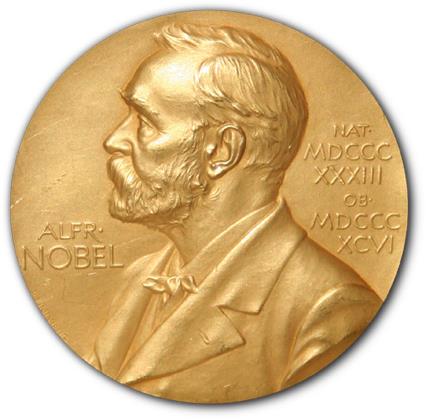
Nobel Prize Laureates Entrust MDPI with Their Research
The Nobel Prize stands as a hallmark of distinction, honouring ground-breaking research across disciplines. Annually, the Nobel Prizes are awarded in six categories: Physics, Chemistry, Medicine or Physiology, Literature, Peace, and Economic Sciences.
Through the years, renowned scholars have entrusted MDPI with their work. As at December 2023, 26 Nobel laureates have contributed to more than 75 articles across 25 MDPI journals, including: Antibiotics, Applied Sciences, Biology, Biomedicines, Cancers, Catalysts, Cells, Crystals, Entropy, Games, IJMS, Life, Materials, Micromachines, Molecules, Pharmaceuticals, Pharmaceutics, Photonics, Quantum Beam Science, Remote Sensing, Sensors, Solids, Universe, Vaccines, and Viruses.
The best of the best trust us with their work.
Nobel Prize Laureates Who Have Published with MDPI
We are proud to list the names of Pierre Agostini, Hiroshi Amano, Werner Arber, Aaron Ciechanover, Robert H. Grubbs, Oliver Hart, Gerard ‘t Hooft, Michael Houghton, Harald zur Hausen, Katalin Karikó, Jean-Marie Lehn, Gérard Mourou, Ferid Murad, Shuji Nakamura, William Nordhaus, Kostya S. Novoselov, Giorgio Parisi, Charles M. Rice, Alvin E. Roth, Donna Strickland, K. Barry Sharpless, George F. Smoot, Anne L’Huillier, Drew Weissman, Kurt Wüthrich, Ada Yonath.
The privilege of hosting such contributors resonates deeply with our editorial teams. For instance, in this interview, the Editor-in-Chief (EiC) of Universe speaks on the significance of publishing a paper by Nobel laureate Gerard ’t Hooft within the journal.
2023 Nobel Prize Winners Published by MDPI
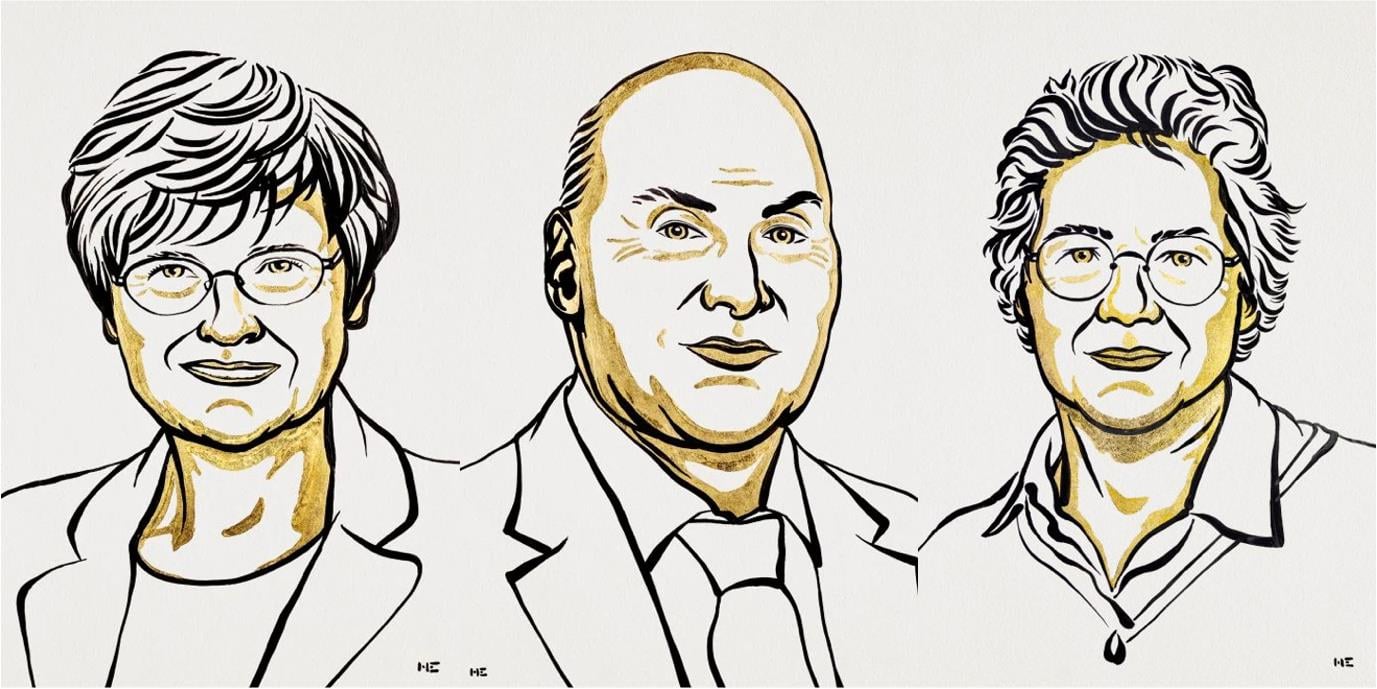
Nobel Prize Winners, 2023: Katalin Karikó, Drew Weissman, Anne L’Huillier (Ill. Niklas Elmehed © Nobel Prize Outreach)
Three laureates from the 2023 Nobel Prize cohort have trusted MDPI as their publishing platform. Notably, in a 2022 Pharmaceutics paper, molecular biologist Katalin Karikó and her team presented a methodology for evaluating mRNA capping efficiency, pivotal for therapeutic applications. Pharmaceutics had previously dedicated a Special Issue to “mRNA Therapeutics: A Themed Issue in Honor of Professor Katalin Karikó”, spotlighting ten articles from August 2021 to February 2022.
In the journal Vaccines, Professor Drew Weissman, collaborating with scholars from Pennsylvania University and George Mason University, contributed an influential review titled “Nanomaterial Delivery Systems for mRNA Vaccines”. His collaborative efforts spanned five papers across MDPI journals between 2021 and 2023.
Furthermore, Anne L'Huillier of Lund University, only the fifth female recipient of the Physics Prize, co-authored an article in Applied Sciences focusing on "Advanced EUV and X-Ray Optics". Similarly, Pierre Agostini, an Emeritus Professor from Ohio State University, co-authored an article featured in the special issue "Attosecond Science and Technology: Principles and Applications".
We extend heartfelt congratulations to all Nobel Prize laureates and express sincere gratitude for their confidence in MDPI as a platform for their scholarly contributions.
Read more:
Impactful Research

MDPI Journals Newly Indexed in 2023
The aim of indexing is to enhance the quality and credibility of published research, ensuring that researchers access the most credible resources available. While the principle behind citation indexing is straightforward, it remains one of the most dependable methods for tracking an idea's evolution across various scientific disciplines.
Throughout the year, MDPI works to expand the reach of our publications across premier multidisciplinary databases like Web of Science, Scopus, EBSCO, and ProQuest. This initiative is spearheaded by MDPI's Indexing team, under the leadership of Dr. Constanze Schelhorn.
In 2023, MDPI achieved 54 new acceptances in Scopus, 29 in Web of Science, 52 in EBSCO, and 83 in DOAJ: Directory of Open Access Journals.
The team prioritizes ensuring that our journals feature in numerous specialized databases, including PMC, PubMed, MEDLINE, Inspec, CAS, and FSTA, among others. Currently, MDPI collaborates with over 65 renowned international databases, consistently enhancing our database affiliations annually.
MDPI’s journals are indexed in all major global databases.
Furthermore, we collaborate with universities and government organizations to list our journals in country-specific ranking lists and relevant institutional repositories. This ensures compliance with requirements often set by funders or institutions for authors to publish in specific journals.
Web of Science Adds 24 MDPI Journals to Emerging Sources Citation Index (ESCI)
Clarivate recently analysed MDPI’s new journals, resulting in 24 journals, mainly established in 2020, being added to the ESCI in November and December 2023. Additionally, five journals passed this assessment earlier in the year. For a complete list of our journals in Web of Science, refer here. Journals in the ESCI meet 24 quality criteria, ensuring editorial rigor. They may be considered for inclusion in broader indices like the Science Citation Index Expanded (SCIE), the Social Sciences Citation Index (SSCI), or the Arts and Humanities Citation Index (AHCI), based on four impact criteria.
Read more:
Inside MDPI

MDPI Appoints New Chief Operating Officer (COO)

Alistair Freeland returned to MDPI and assumed the role of Chief Operating Officer in November 2023, a position he previously held from 2013 to 2019. He succeeds Dr. Yu Lin, who will remain a member of MDPI’s Board of Directors, overseeing significant financial decisions for the company. I would like to express my sincere thanks to Dr. Yu Lin for his service as COO.
Alistair brings extensive experience not only in scholarly publishing but also in technology and business management. Prior to rejoining MDPI, he was associated with SIX Group, the entity responsible for Switzerland's financial market infrastructure. There, he played a pivotal role in developing the blockchain-based platform SDX (SIX Digital Exchange), which has gained traction among major Swiss banks and the Swiss National Bank.
As COO, Alistair will collaborate with the MDPI management team to improve the practices and services we offer to scholarly communities. I am pleased to welcome Alistair back to MDPI and look forward to his contributions going forward.
Coming Together for Science

MDPI’s 2024 In-Person Academic Events Schedule
MDPI's Conference Team is dedicated to organizing and hosting in-person academic events across Europe, Asia-Pacific, and North America. We recognize conferences as invaluable platforms for scientific collaboration, scholarly exchange, discussions on contemporary topics, networking, and forging collaborations.
Here's a glimpse of the notable events we currently have scheduled for 2024:
|
|
14–16 February, 2024 |
|
|
24–26 April, 2024 |
|
|
28–31 May, 2024 |
|
|
1–4 August, 2024 |
Upcoming events with details to be announced:
- September 2024, Materials 2024 – Basel, Switzerland
- 19–21 September 2024, International Conference on Nanomaterials Sciences 2024 – Beijing, China
- October 2024, ncRNA 2024 – Basel, Switzerland
- November 2024, Pharmaceuticals 2024 – Barcelona, Spain
- 22–26 November 2024, International Conference on Science of Electronics – Wuhan, China
- Stay tuned for more details on the Sustainable Publishing Forum 2024.
Click here for all upcoming MDPI events.
Organize Your Event with MDPI’s Sciforum
Sciforum is MDPI’s platform dedicated to the organization of scientific events. In line with our mission to promote science, Sciforum supports scholars, societies, research networks, and universities at all stages of organizing in-person events, virtual events and webinars. Our platforms are efficient, user-friendly, and cost-effective. We handle all steps related to event management. Contact us for details.
Closing Thoughts

Reflecting on 2023 and Looking Ahead to 2024
As we approach 2024, I reflect on the incredible journey we’ve had together at MDPI this year. The past 12 months have been marked by ambitious projects and initiatives to improve our internal processes, and a commitment to continue delivering top-notch services to our stakeholders. I’d like to thank each and every one of our staff members for contributing to the positive experiences our stakeholders have reported in our surveys. Your dedication to speed, efficiency, and effective communication with our stakeholders is very much recognized and appreciated.
Becoming a stronger organisation
While we have encountered challenges in 2023, it’s important to understand that these are a part of our growth process. Difficulties provide us with opportunities to reflect, address problems at their roots, and ultimately evolve into a stronger organization. Our stakeholders expect us to overcome tough times, and it’s an expectation that we have for ourselves.
I extend my sincere appreciation to every MDPI employee, from our editorial office and IT department to marketing, indexing, IOAP, societies, Scientific Office board, products, production, conferences, finance, operations, admin, and beyond. To our newest team members, a warm welcome; to our longstanding colleagues, your dedication is invaluable.
“I am committed to taking MDPI to a new level of excellence.”
Interacting with many of you during my visits to our offices and representing MDPI at external events has been a personal highlight. I am deeply grateful to Dr. Lin for entrusting me with the role of CEO of MDPI. Looking forward, I am committed to working closely with our management team to lead MDPI and take it to a new level of excellence, aiming to establish it as the most trusted publisher in open access worldwide. This is a collective endeavour, with each of us shaping MDPI’s reputation. I therefore encourage us to take pride in our work, as it represents not only our craft but also MDPI as a whole.
Accountability and communication
As we look forward to 2024, there’s a lot to be excited about. Together, we’ll navigate challenges, seize growth opportunities, and refine our practices. To solidify MDPI’s position as the premier open access publisher globally, we must bolster accountability, improve stakeholder communication, share MDPI’s best practices, champion the open access philosophy, and educate stakeholders about our mission, methodologies, and motivations.
Thank you for engaging with the CEO Letter over the past six months of 2023. I will continue to release this newsletter as a method of sharing the great work being done at MDPI. Please feel free to connect directly with any insights or questions.
Here’s to a joyous and prosperous 2024!
Chief Executive Officer
MDPI AG







